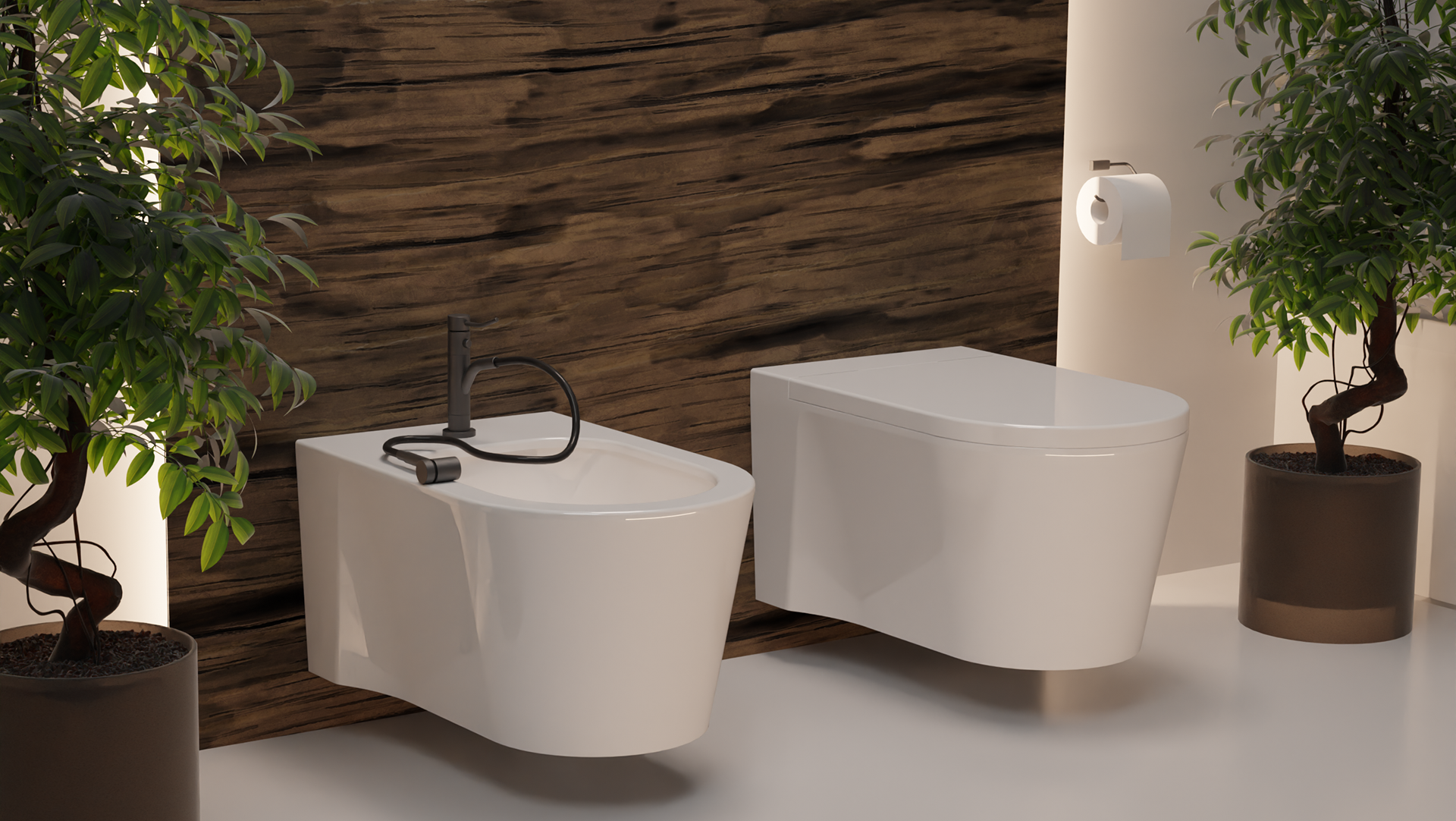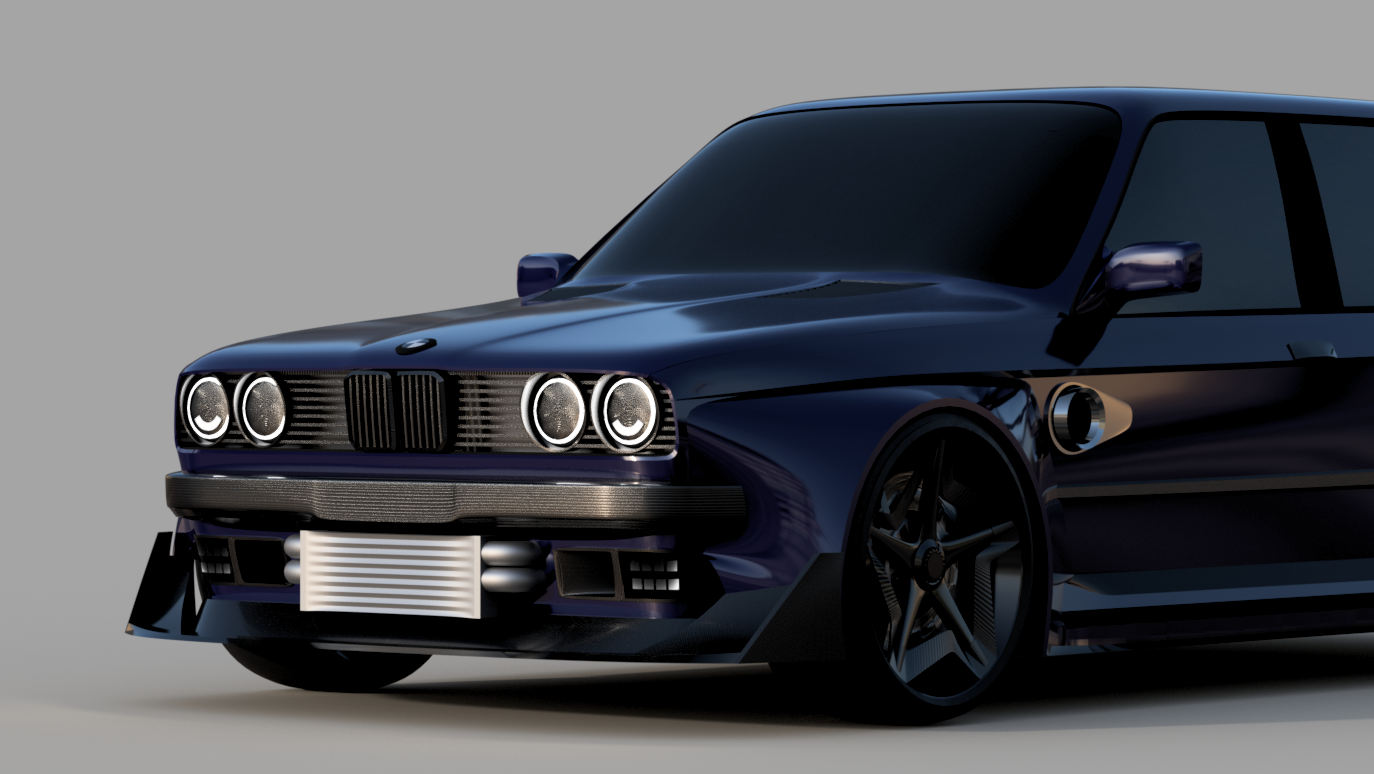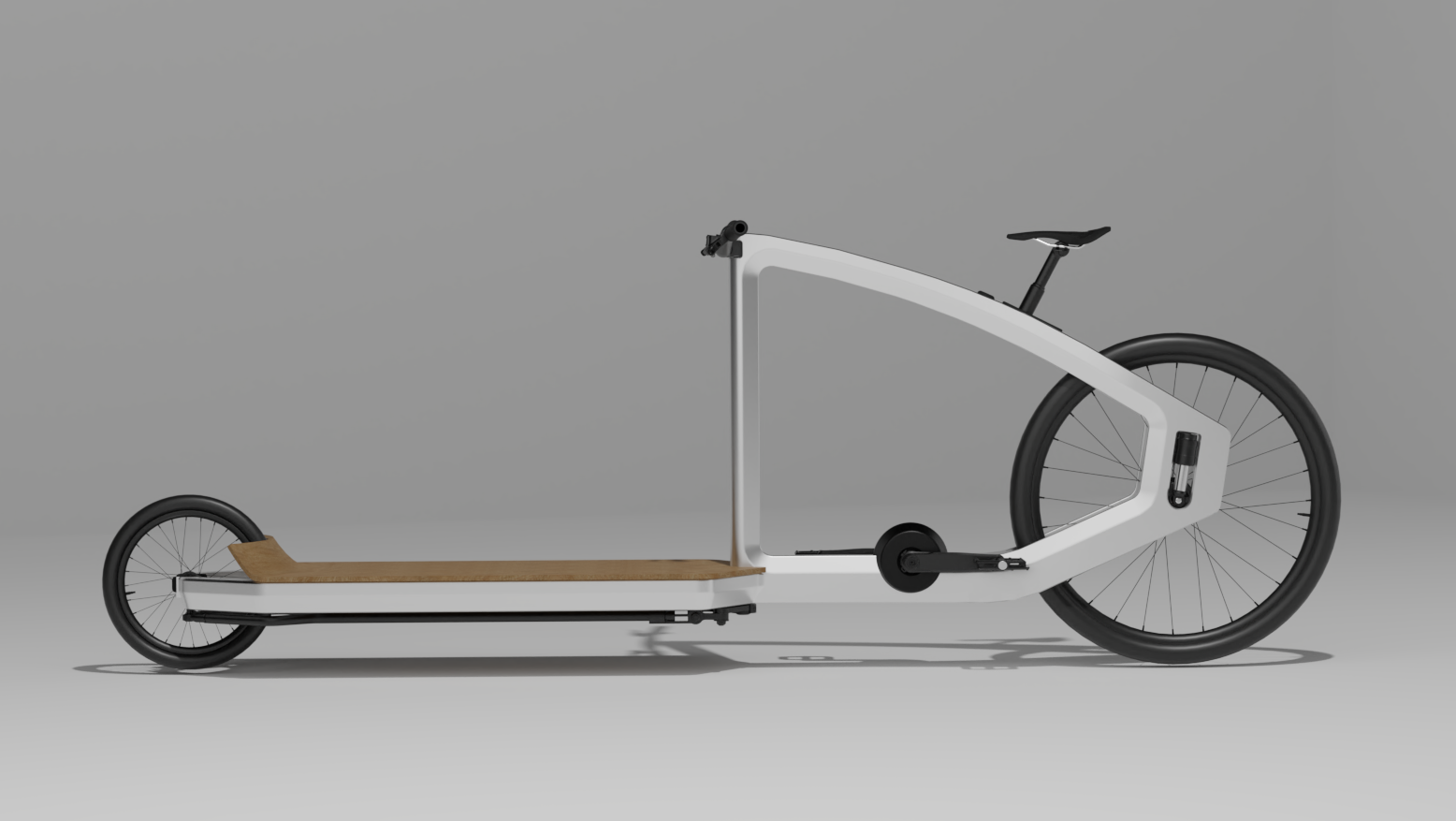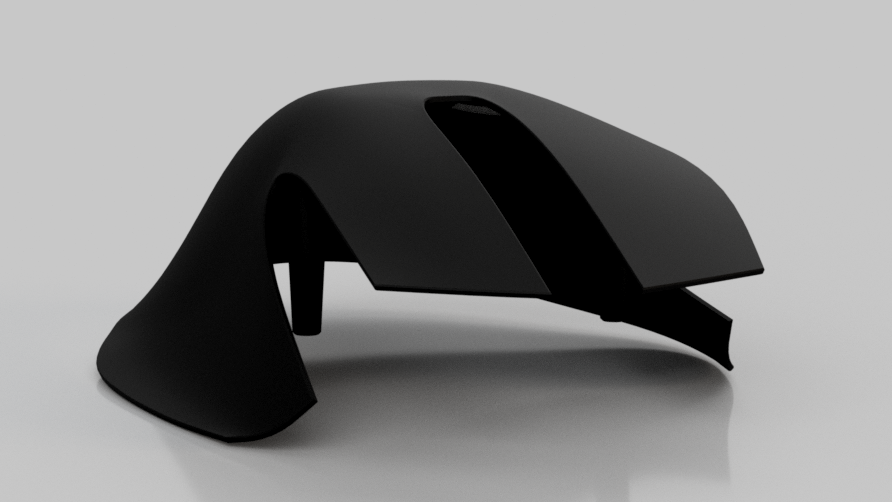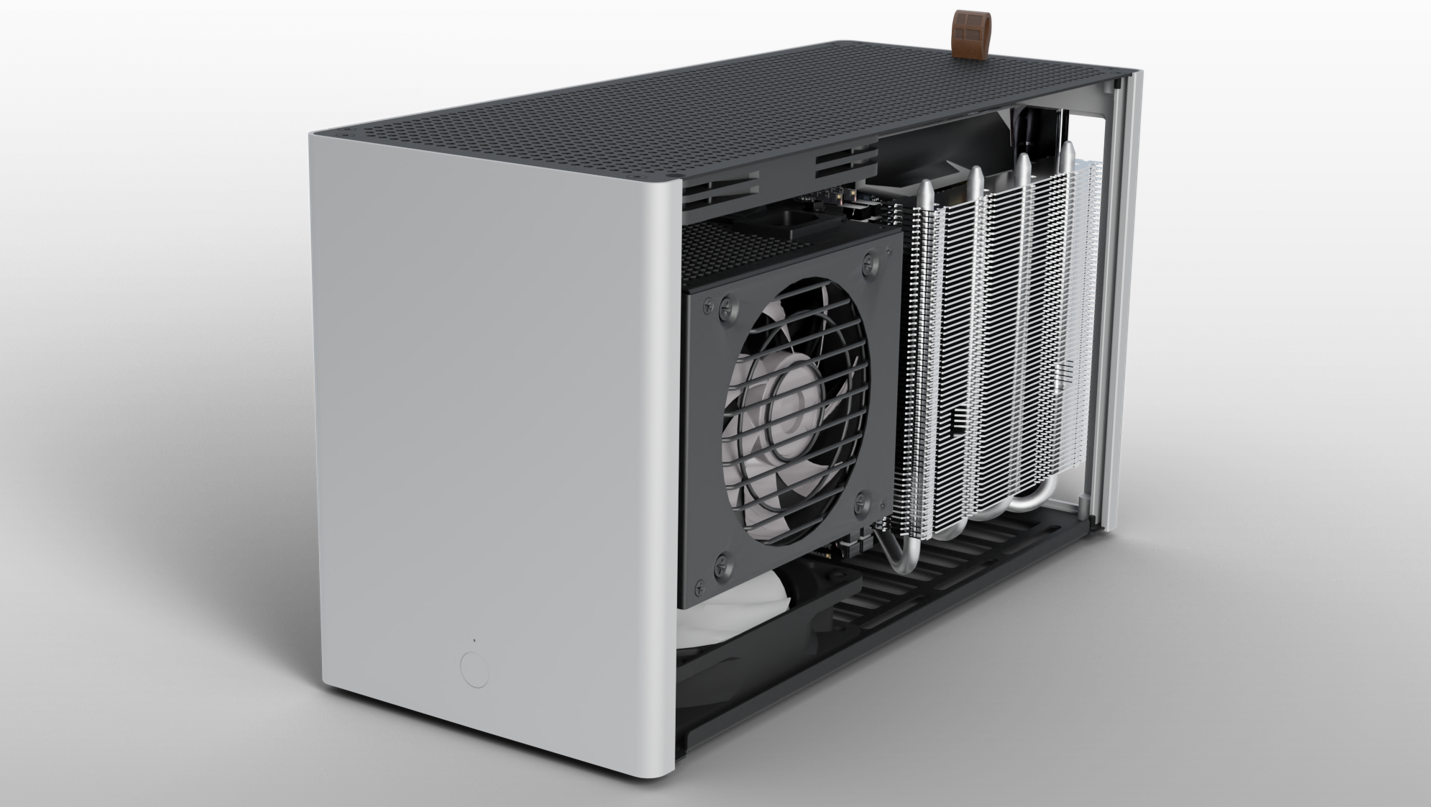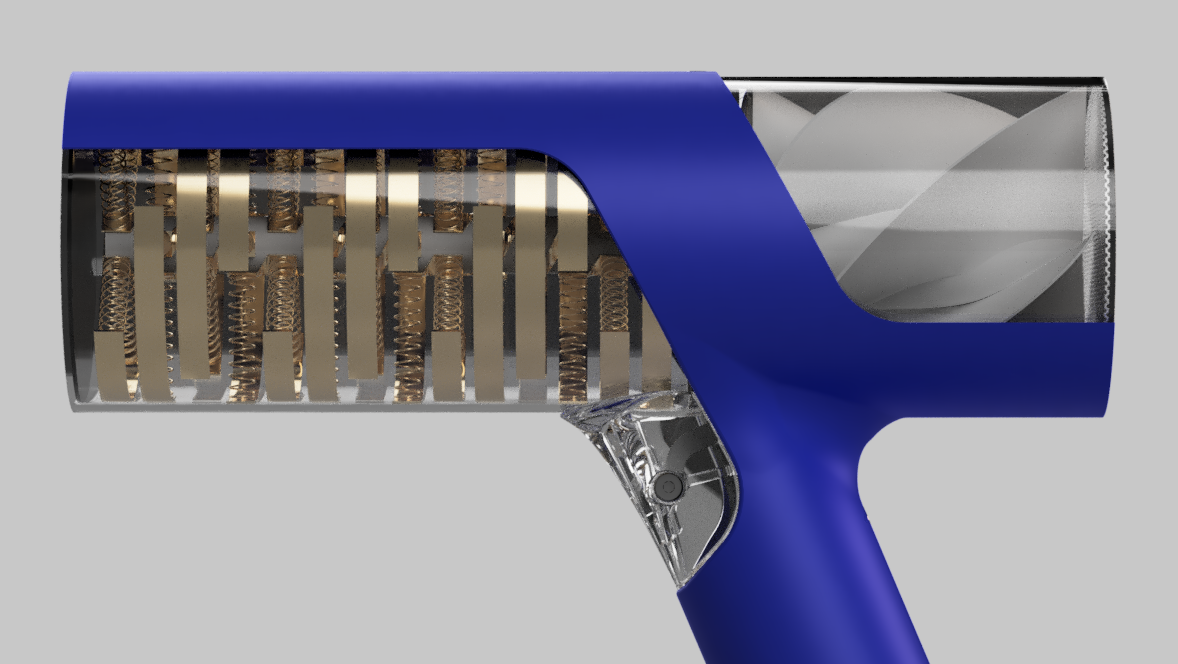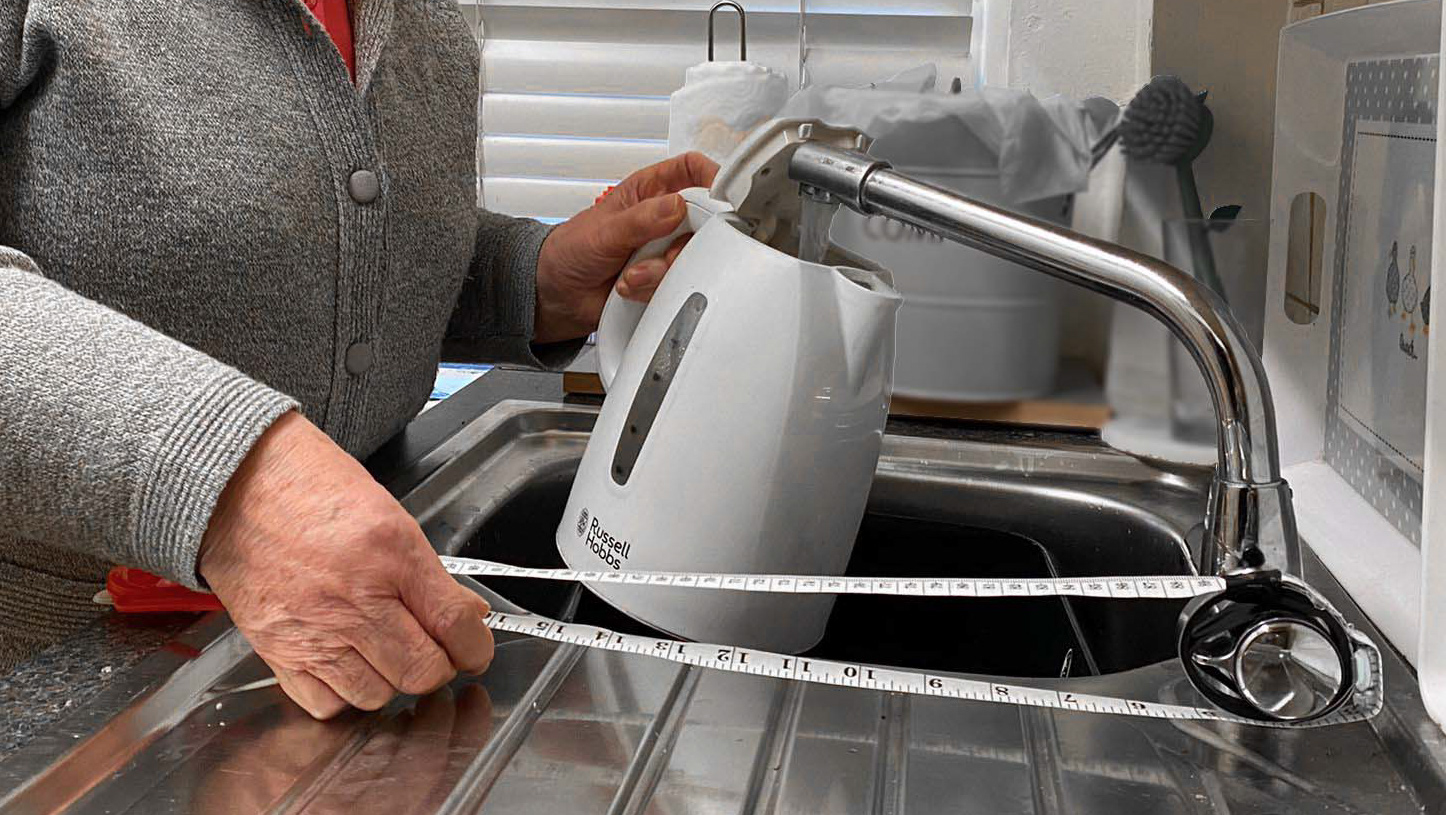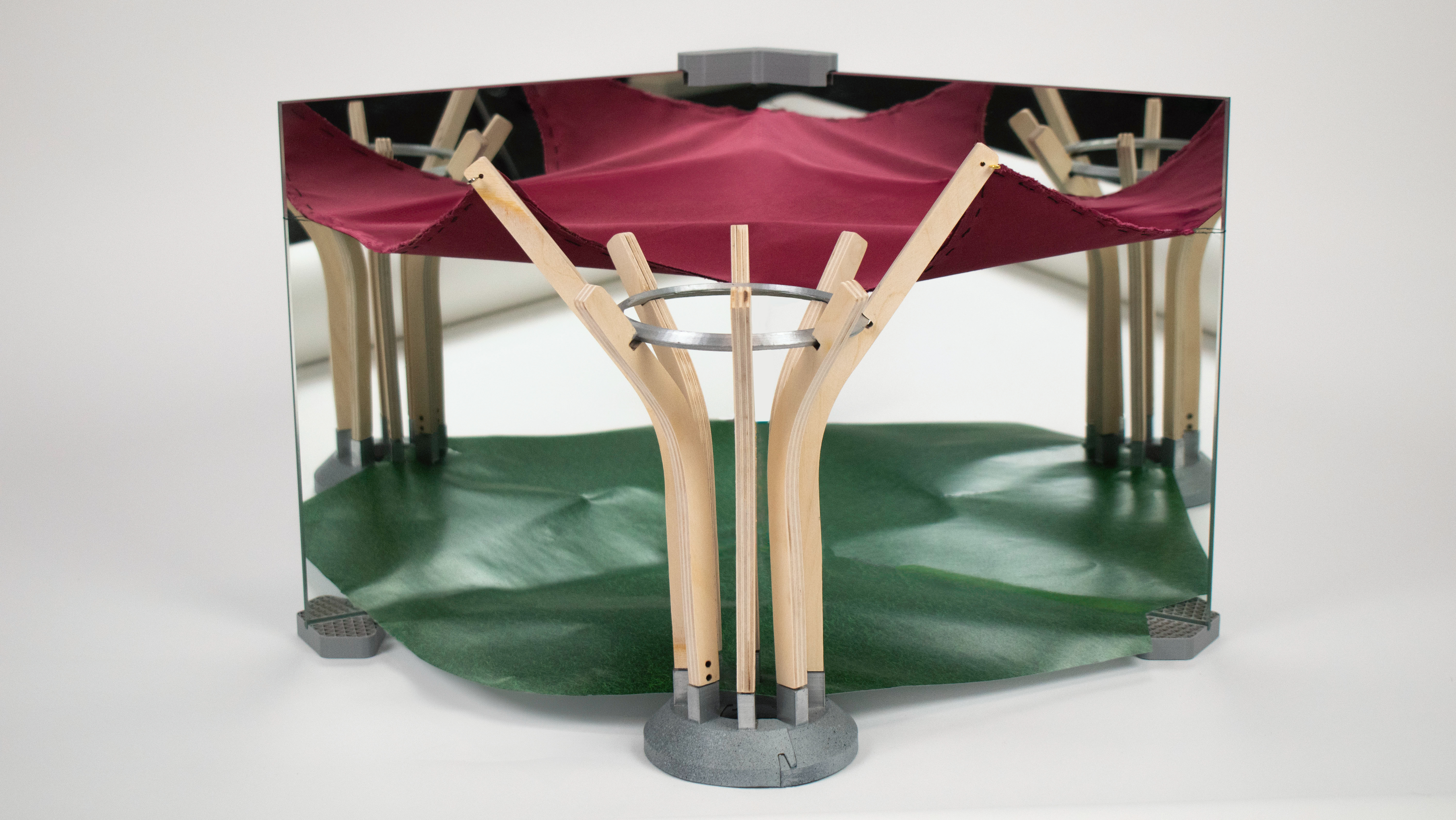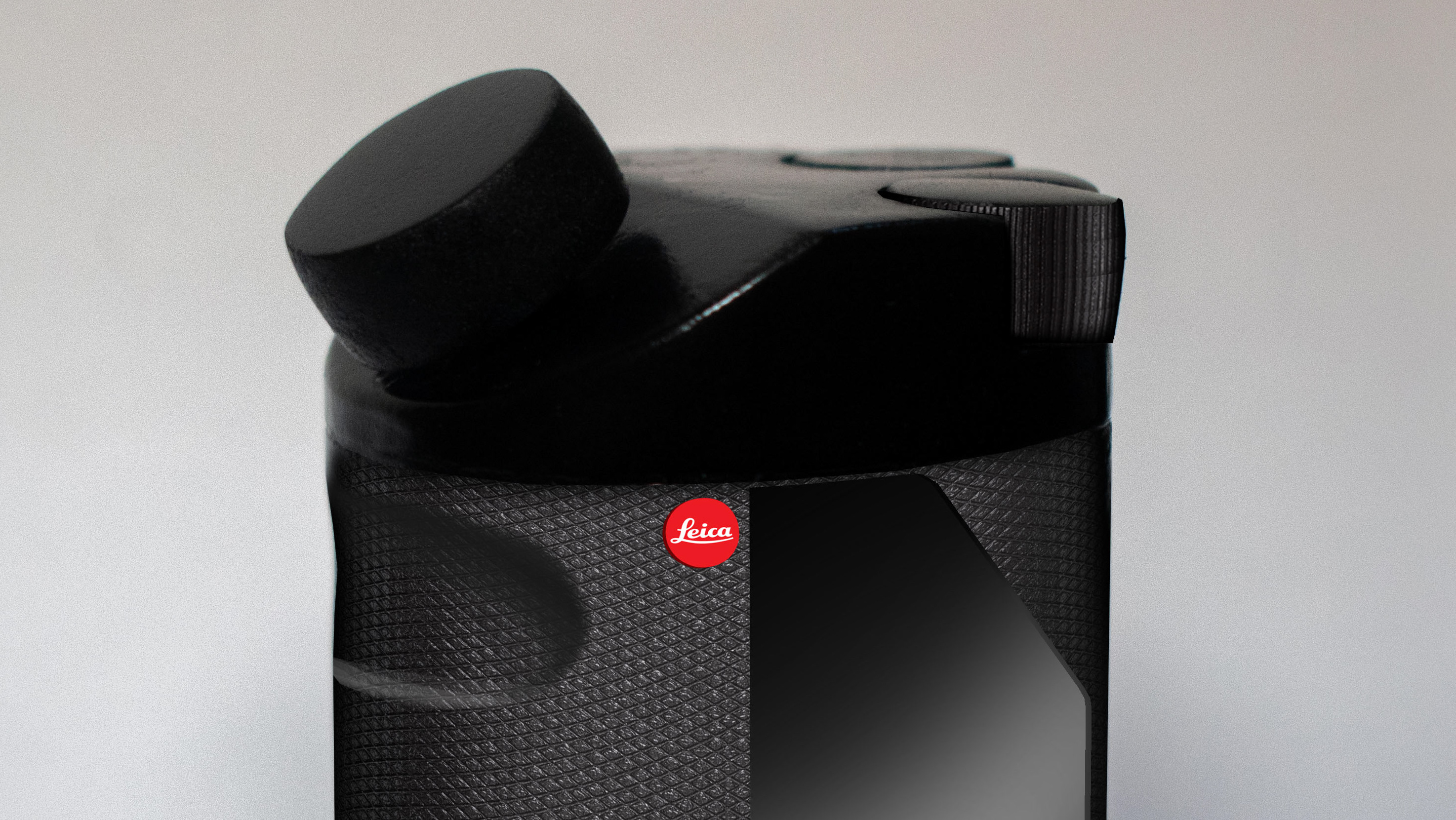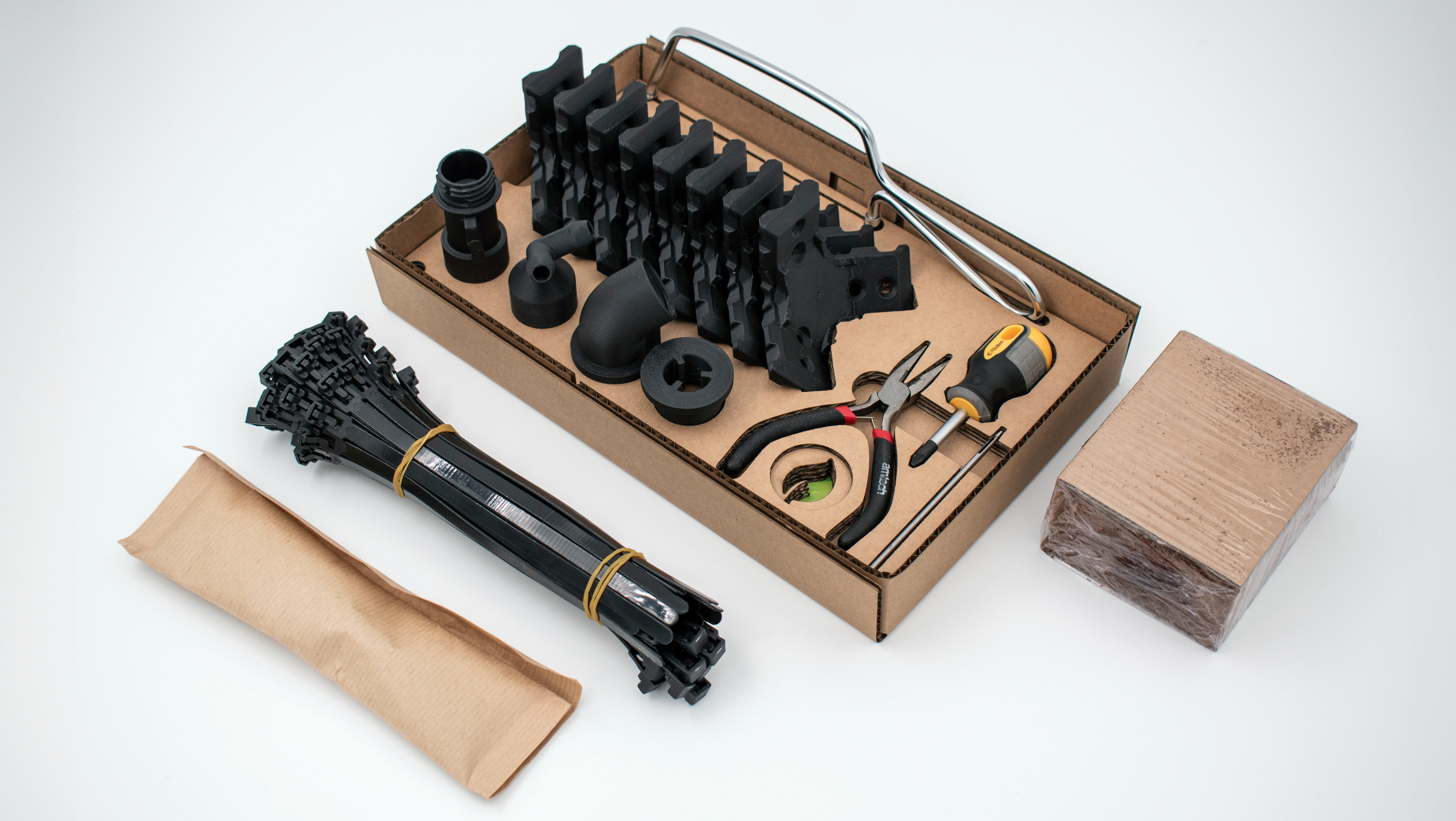Working with Louqe AB
This project was a part of my internship with Louqe AB, a company in Stockholm, Sweden that develops small form-factor computer enclosures of an incredibly high quality out of premium materials such as extruded, anodized aluminium, and they are among the few companies innovating at the forefront of this niche industry.
For more general information about Louqe as a company see the dedicated summary of this internship Here.
This project - which I dubbed VR1, according to Louqe's product naming scheme, was my last with the company, and worked accoring to a tricky brief.
The requirements for this project were to develop a computer case that would function without a riser cable (an extension of the PCIe connection between motherboard and Graphics card). This sort of riser cable is usually used to allow for flexibility of placing the components in a sandwiched layout to reduce the amount of space they take up, so cases without them are generally larger, as not using one means that these components are perpendicular, taking up a large amount of space. My objective was to make a case that could both support very large components such as the latest generation of graphics cards: the recently released Nvidia RTX 4000-series, while not infringing on the share of the Louqe Ghost R1, a larger case that was in development during my internship as well.
Project Parameters
How I approached the Project
I considered every possible angle for this case, looking into all sorts of layouts, and this paid off, allowing me to develop a completely original orientation that was both space-efficient, while aslo allowing for extremely large compatibility with CPU coolers, GPU sizes and even with a large capacity for custom watercooling.
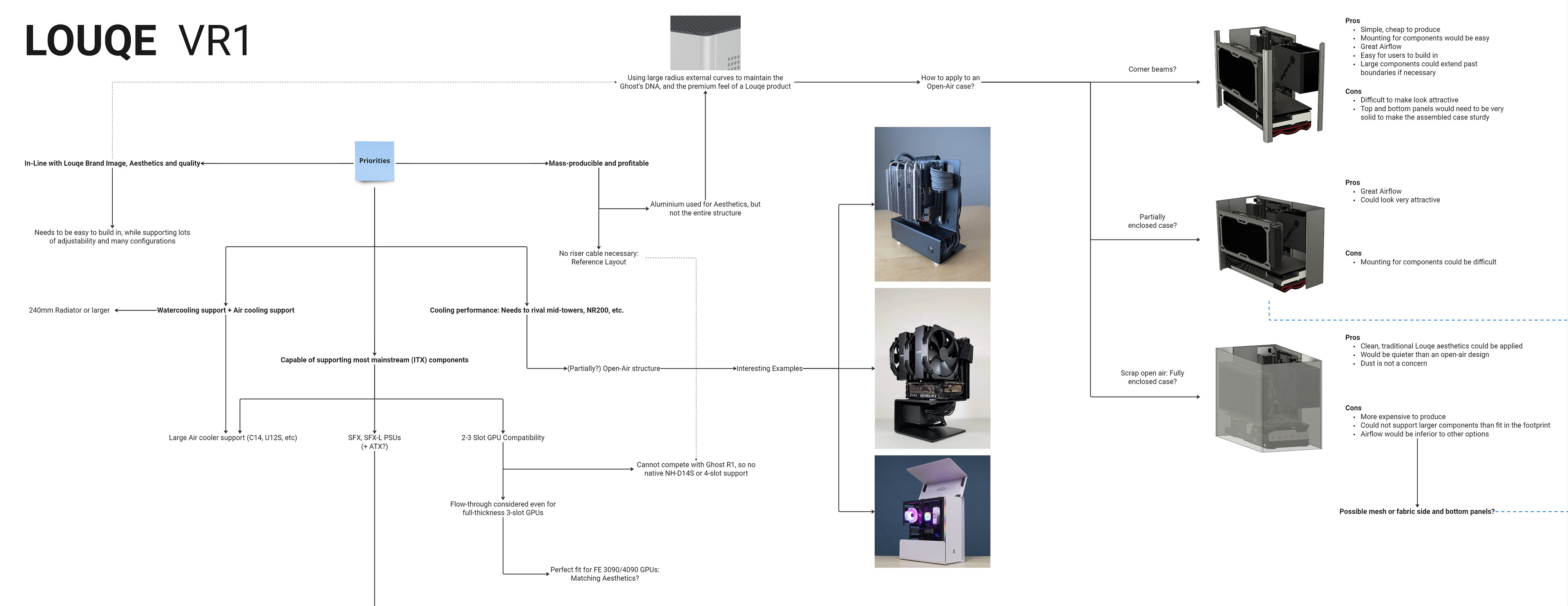
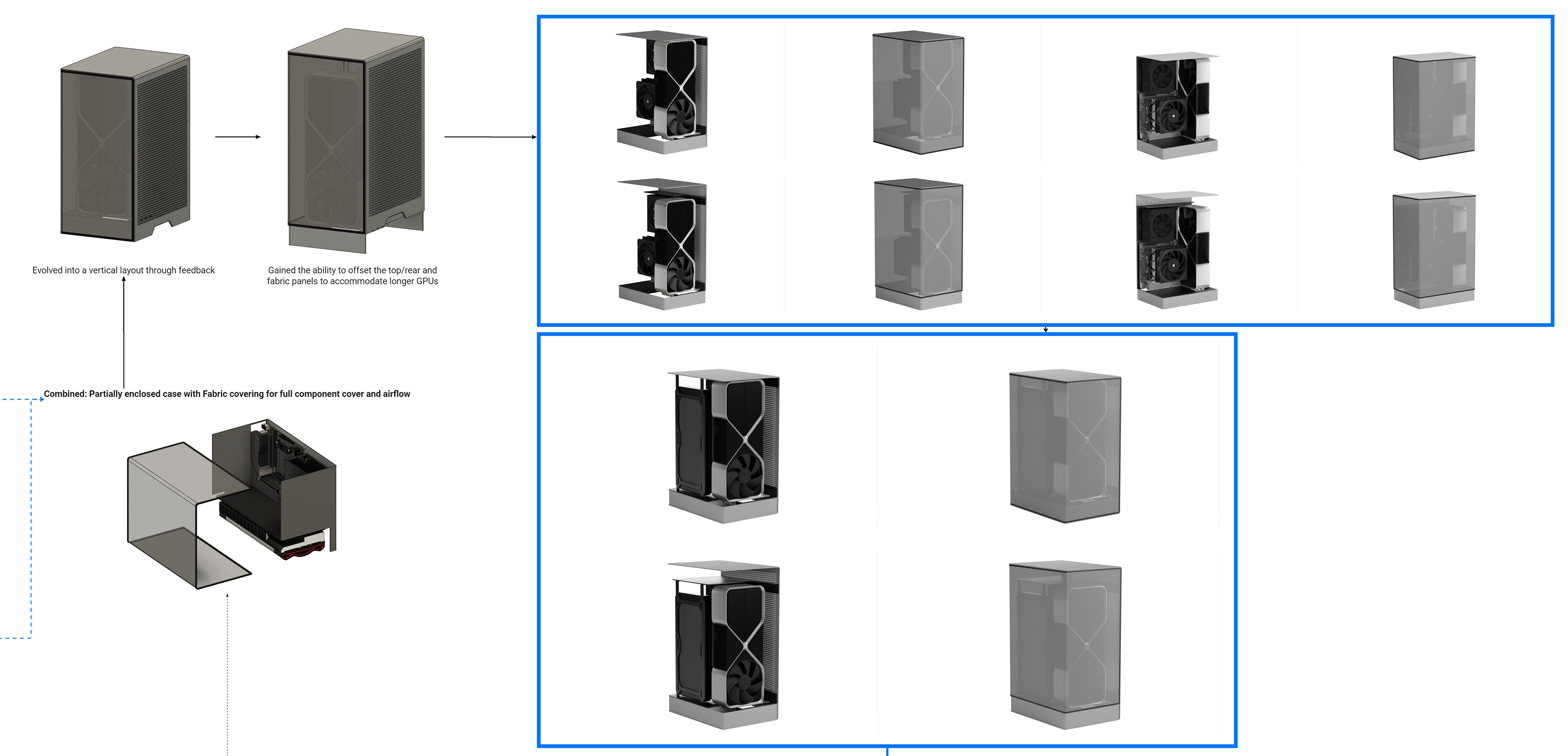
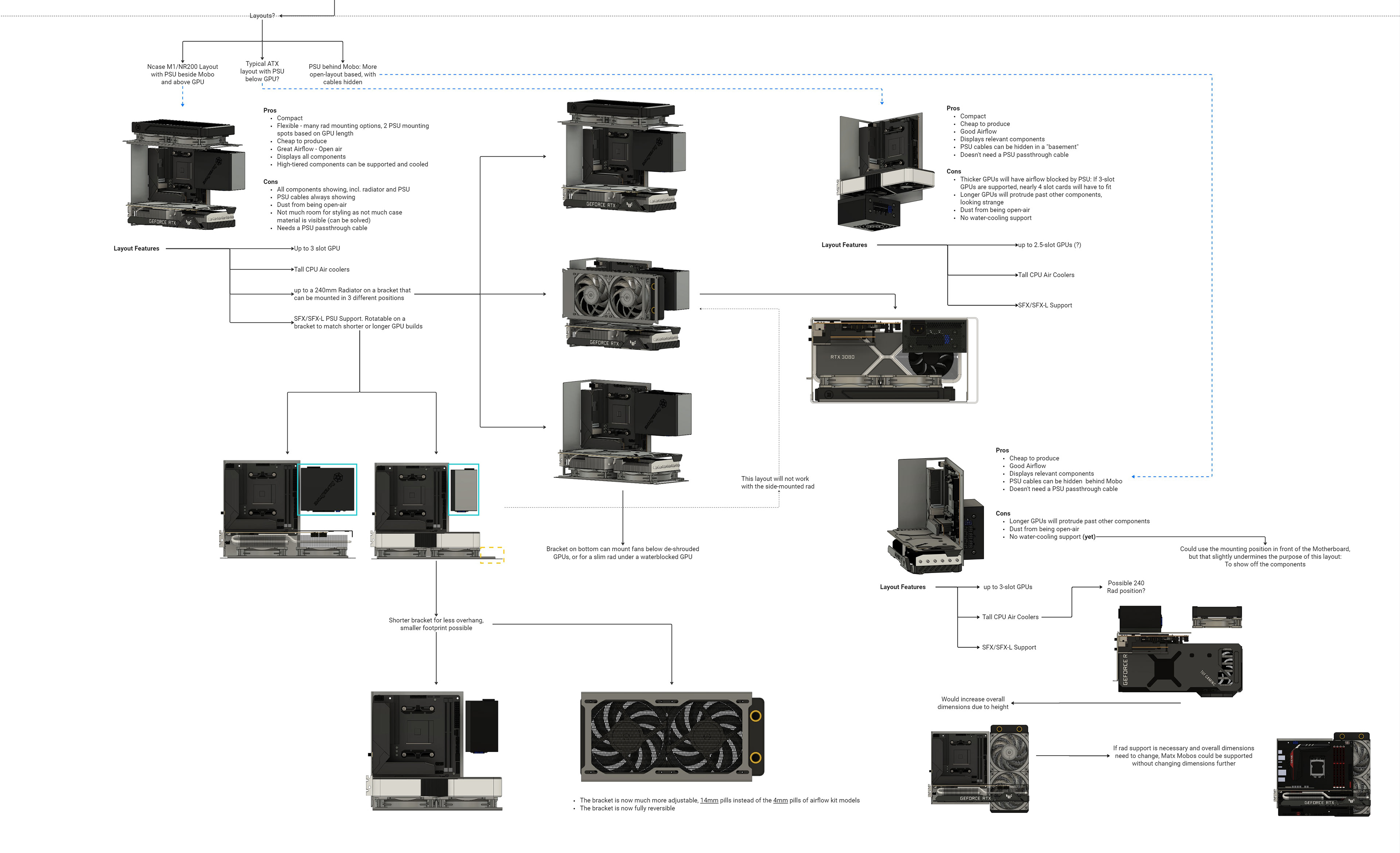
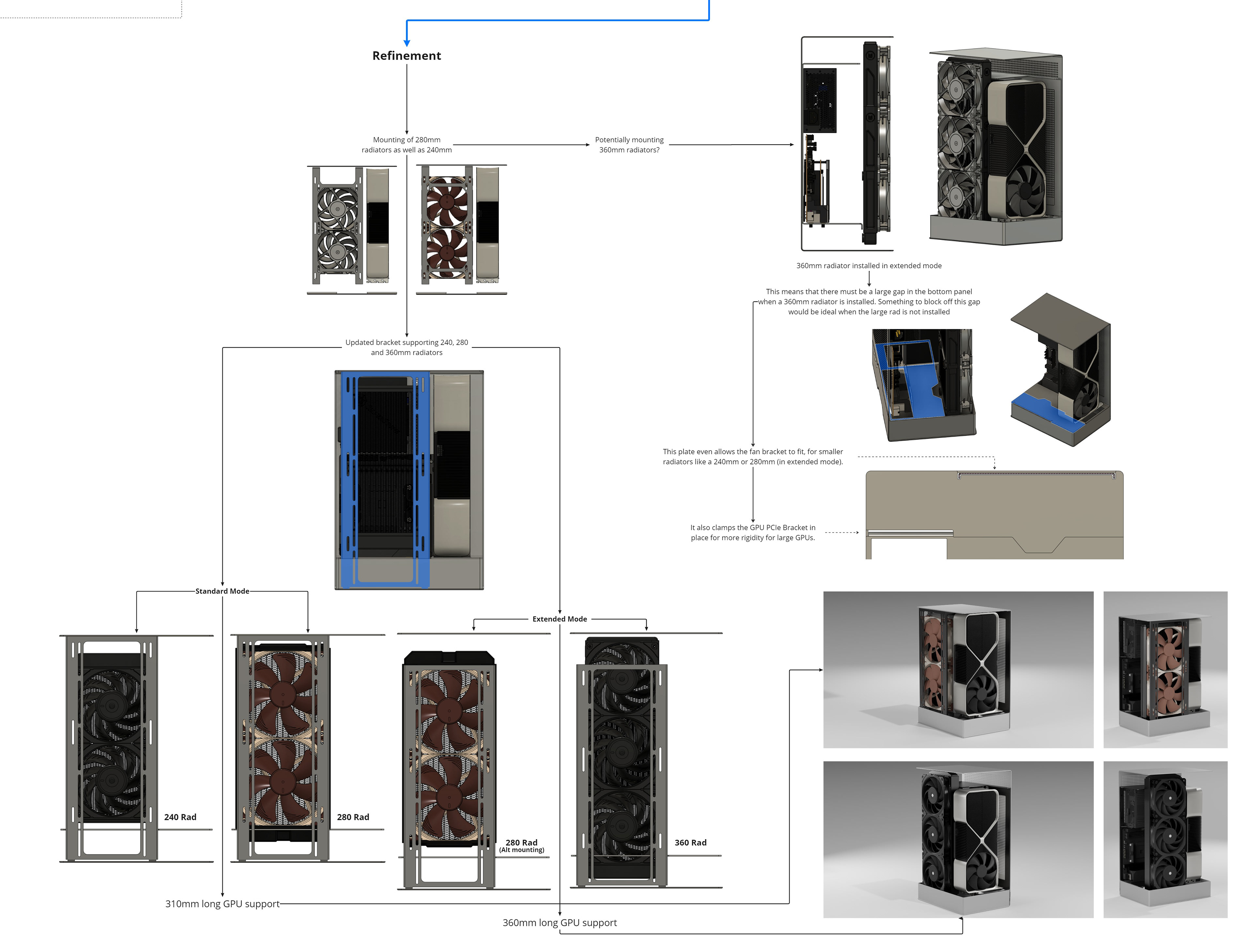
Progress Presentation to Sr. Product Developer and the CEO
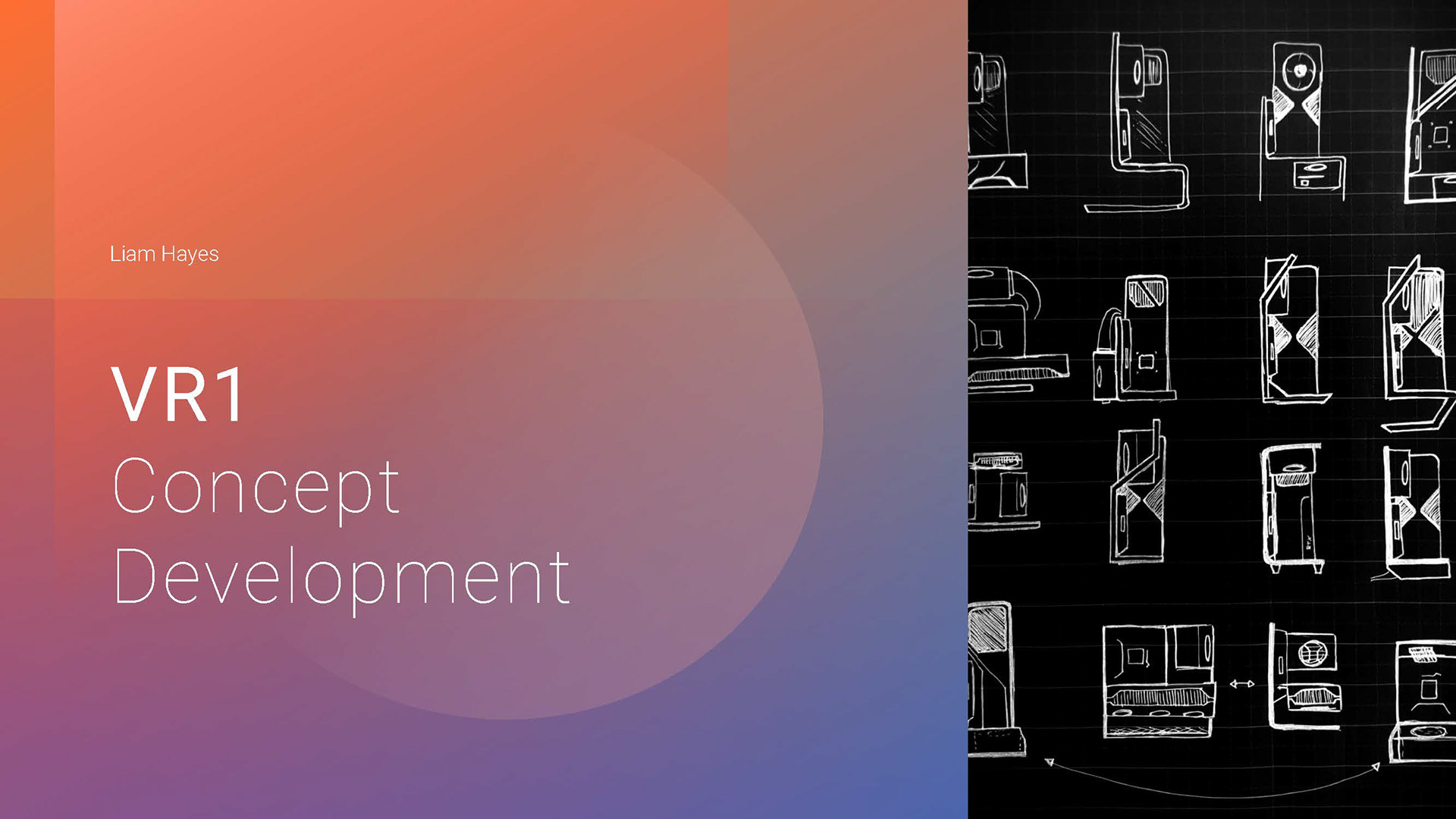
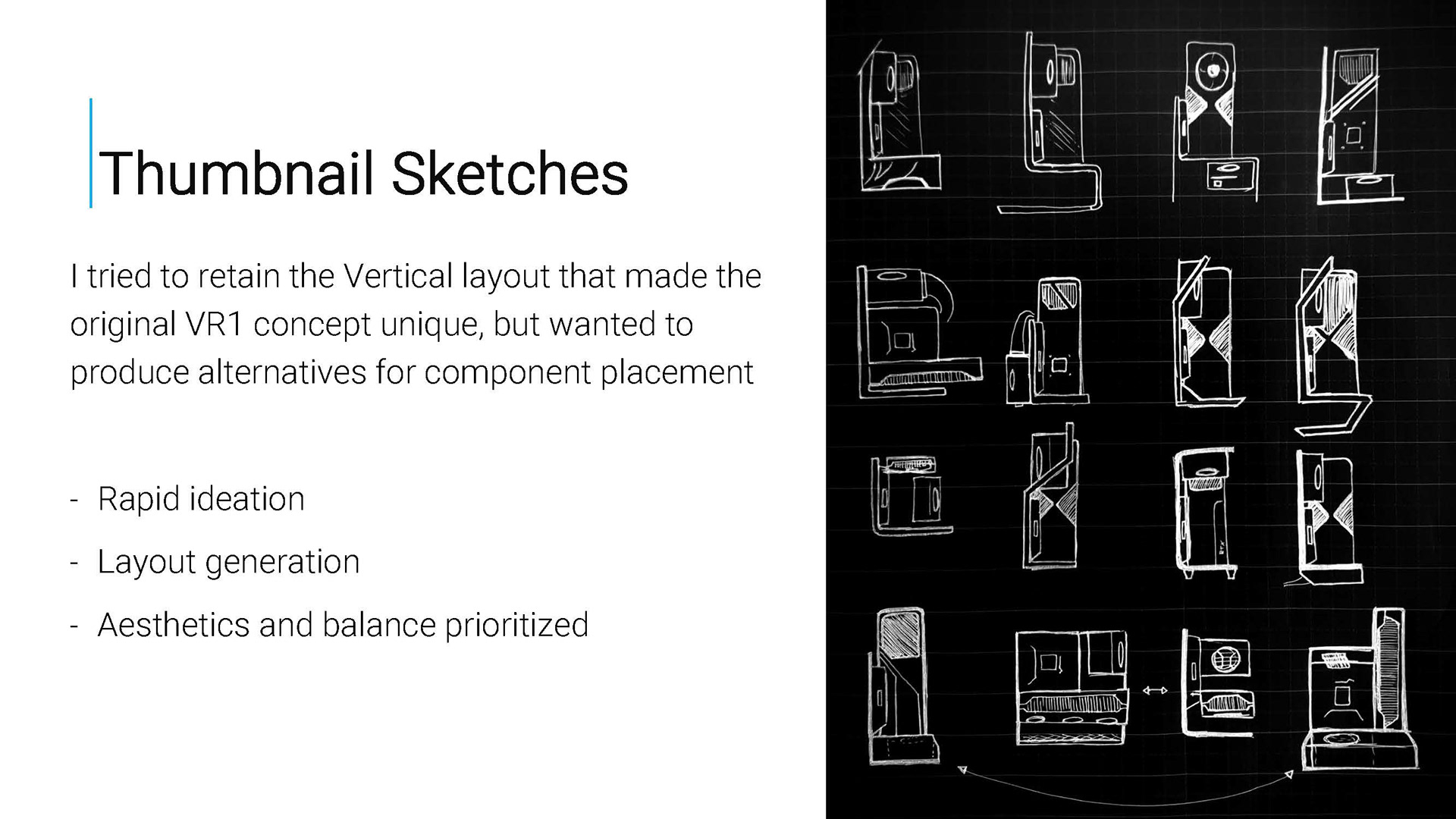
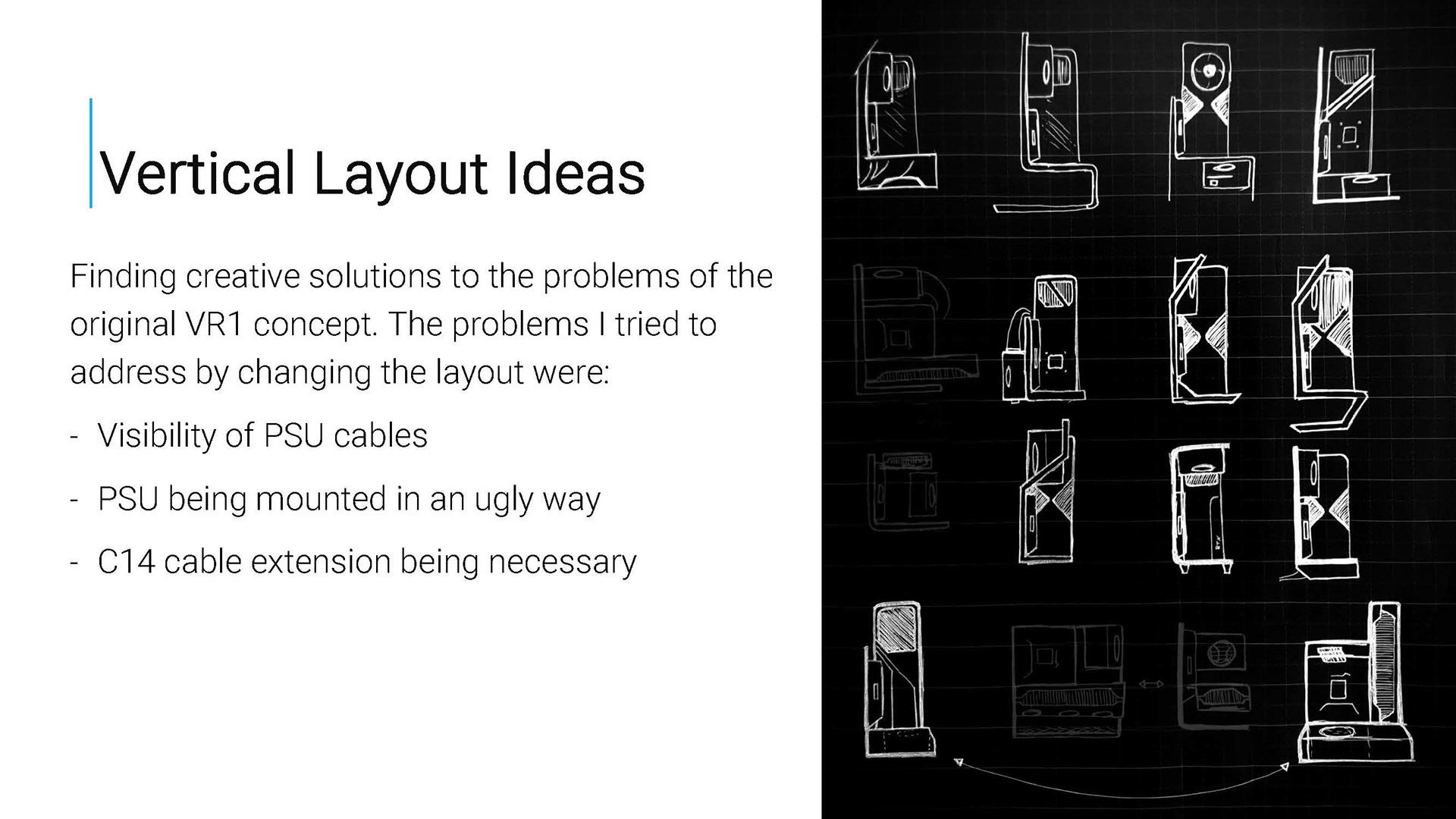
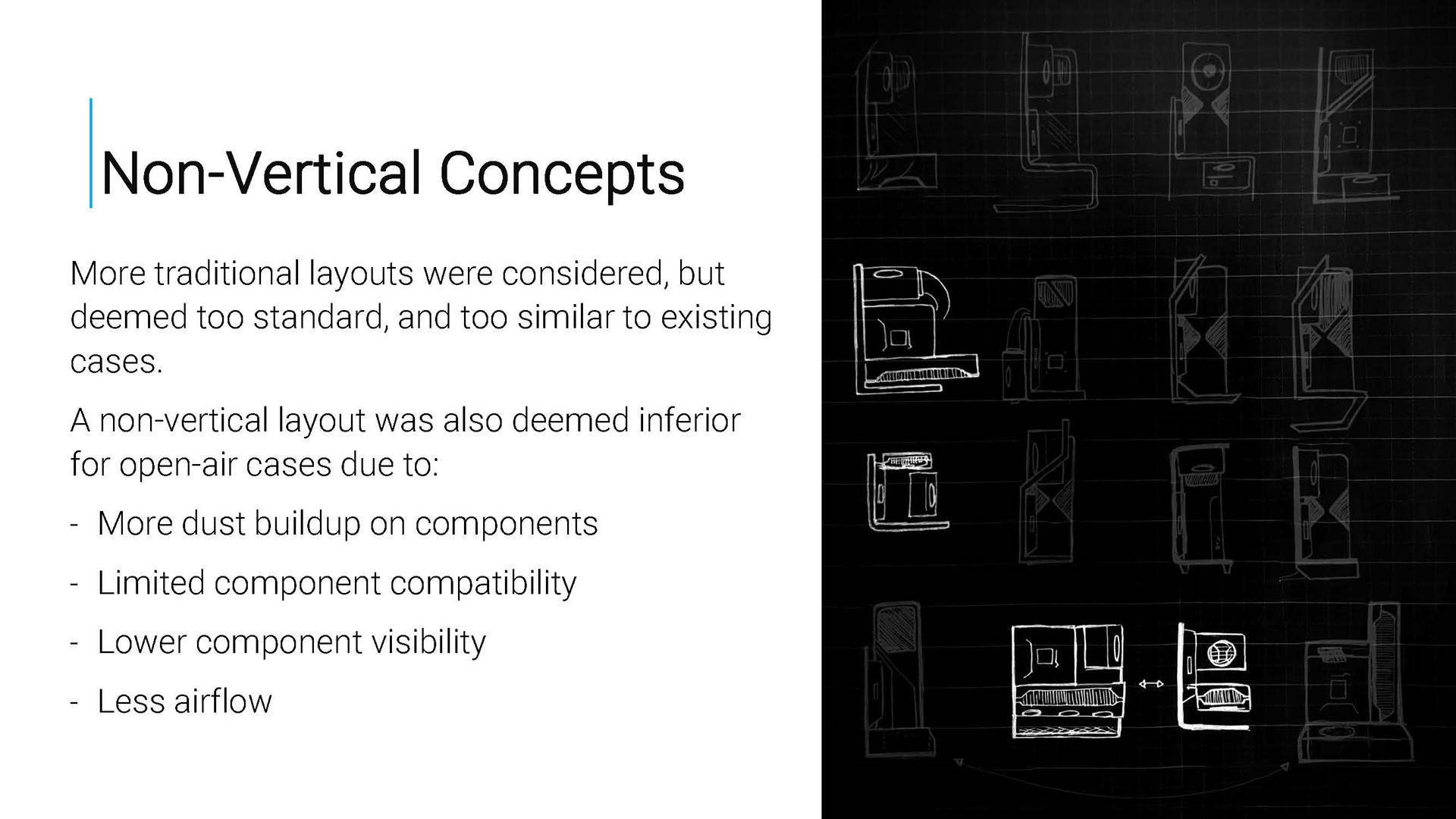
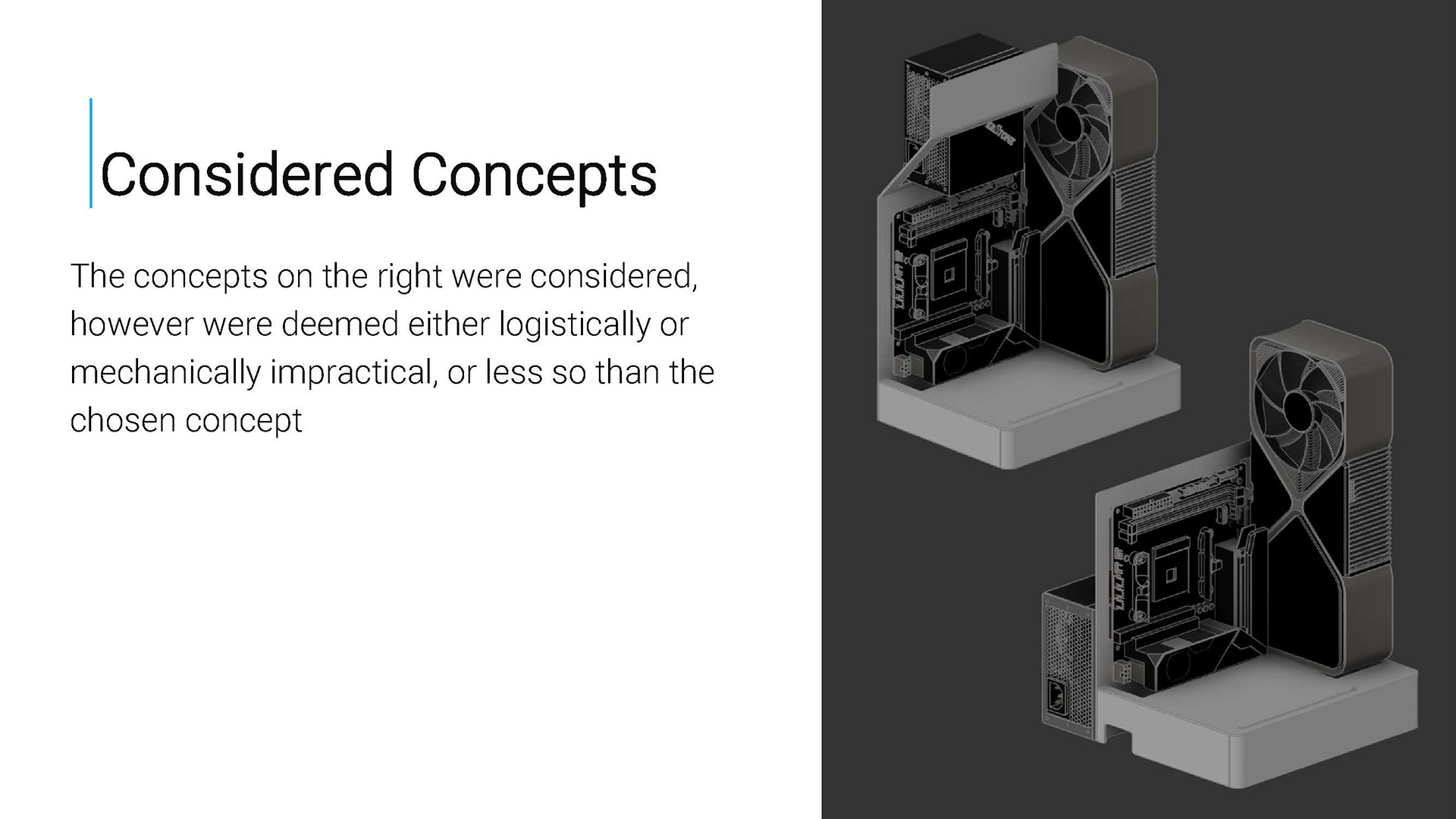
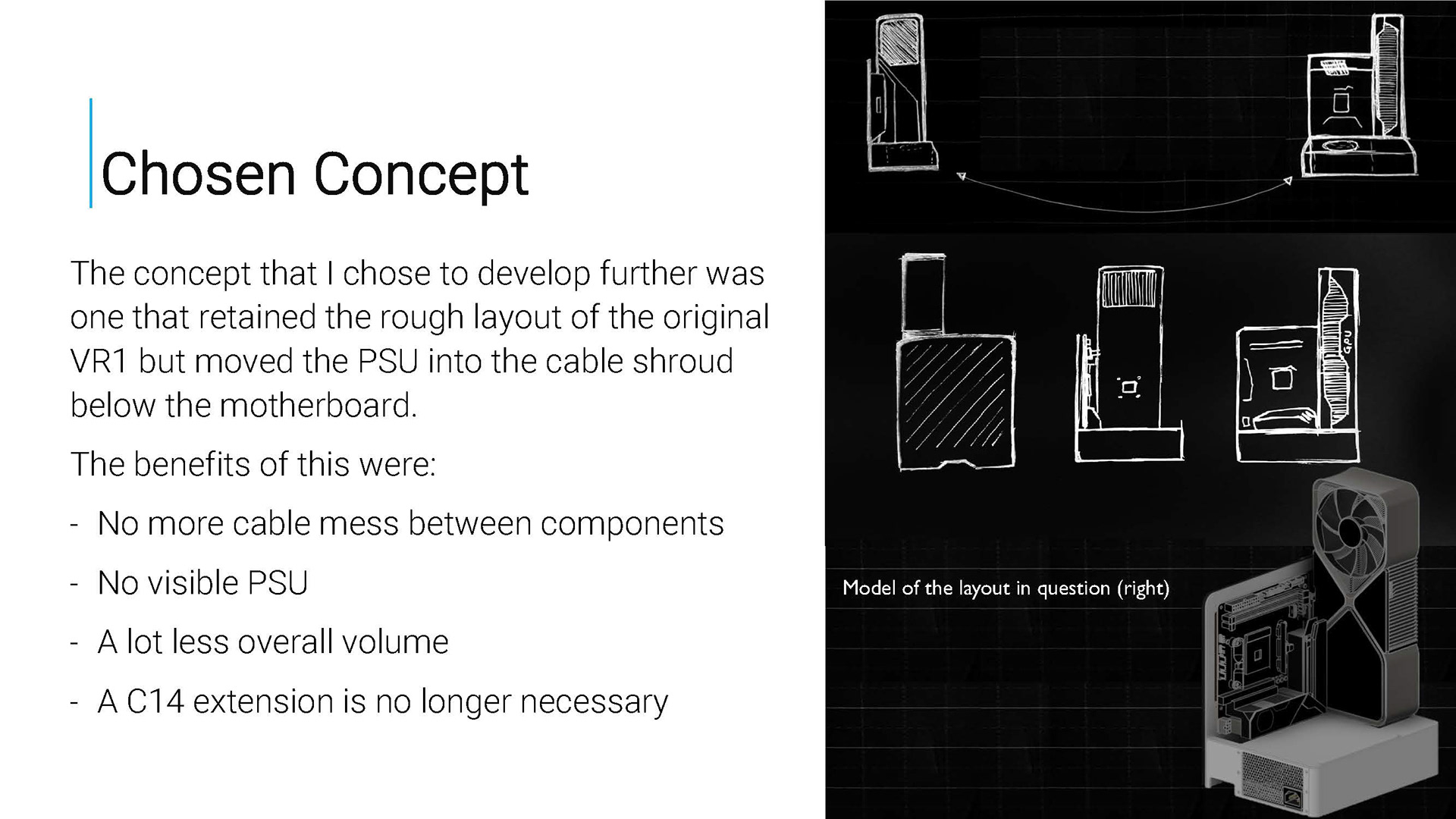
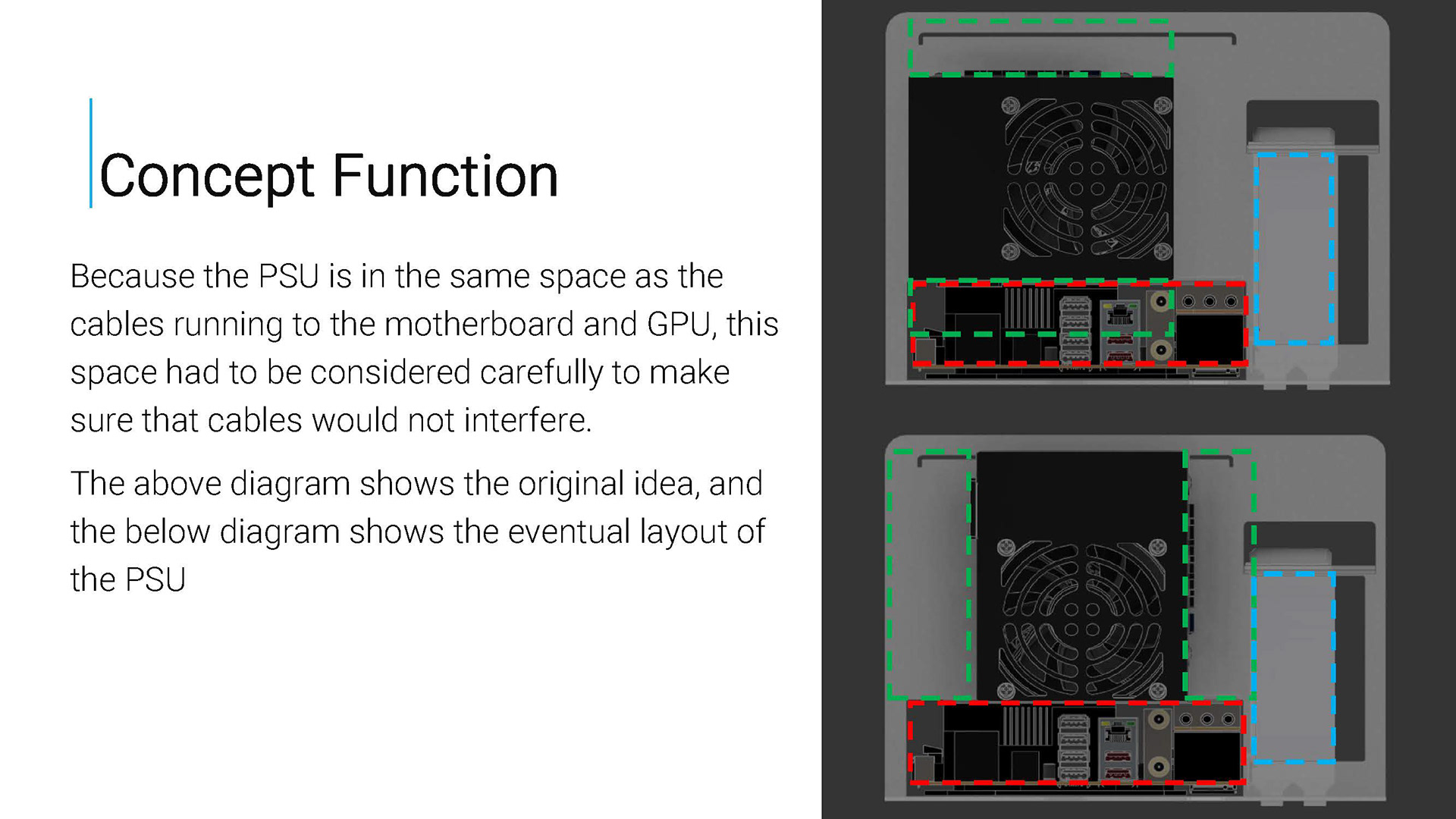
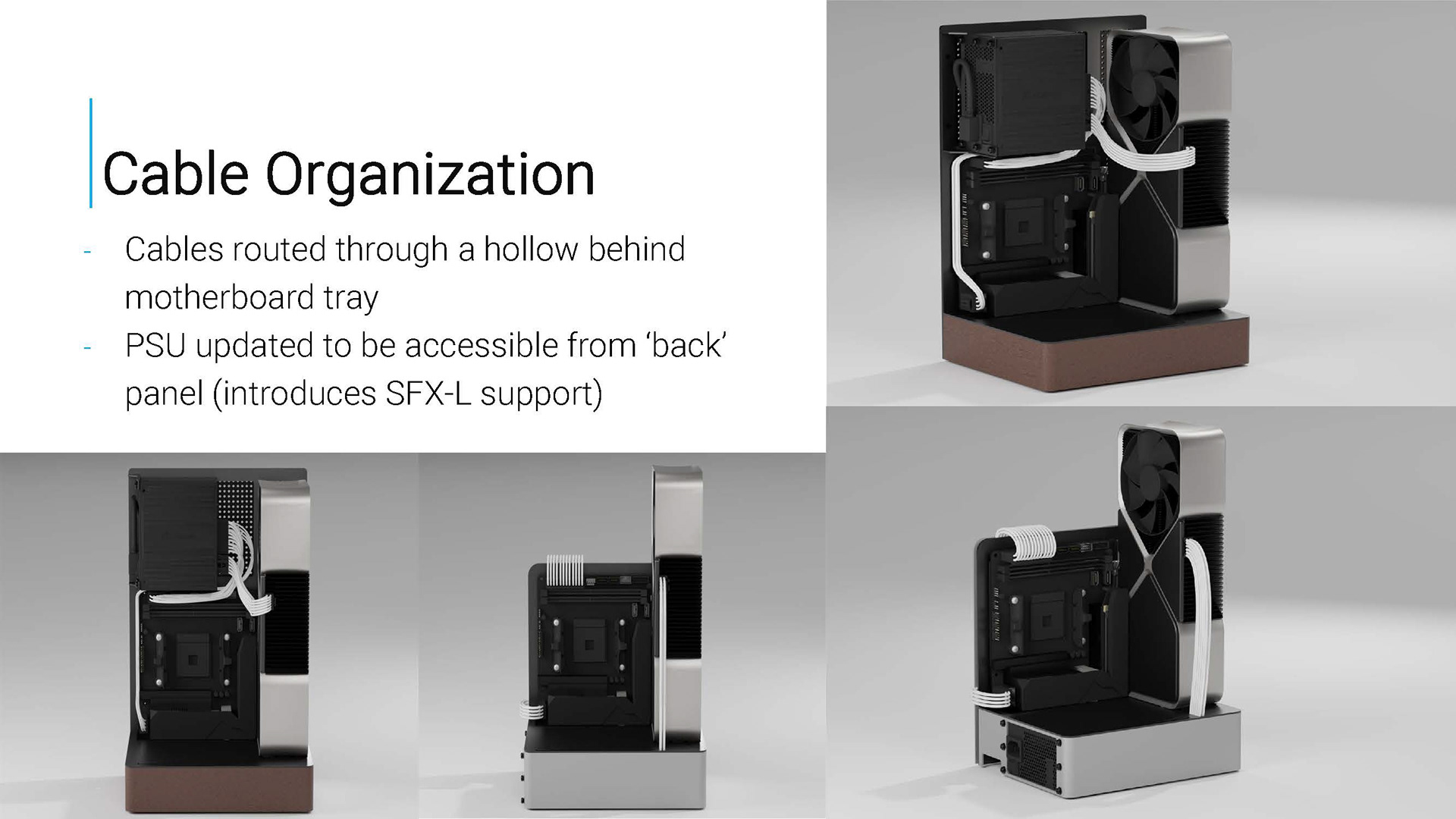
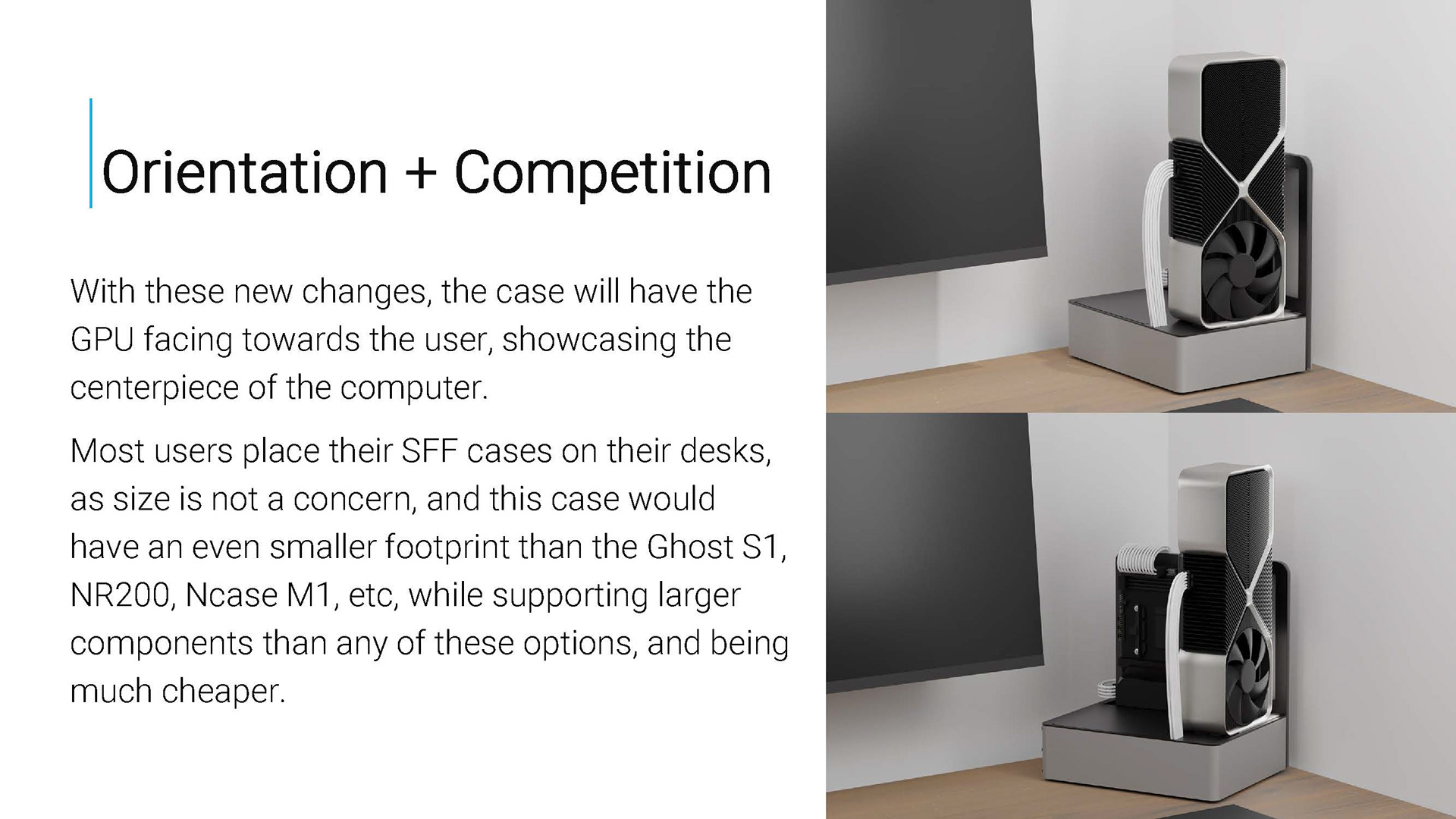
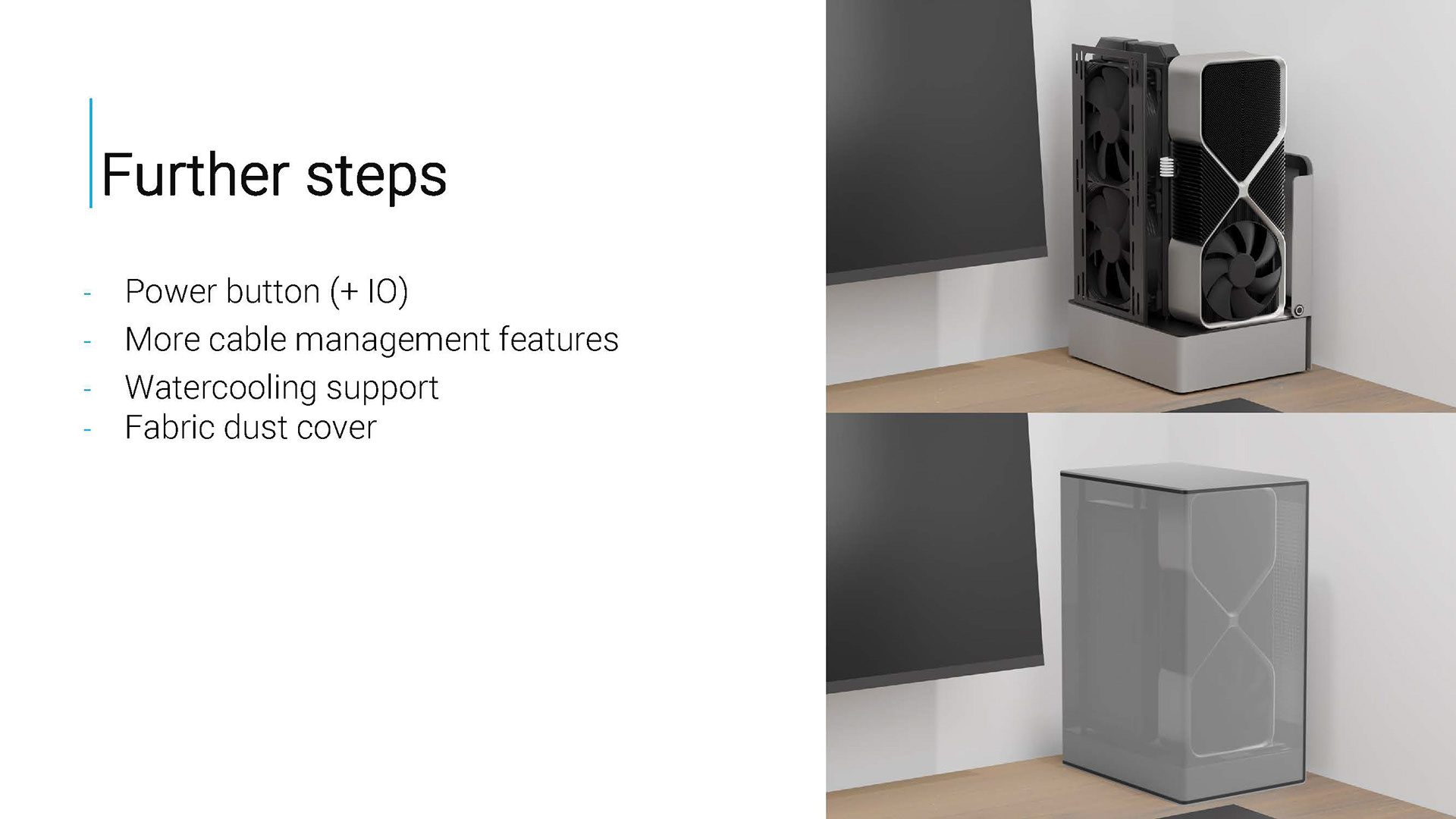
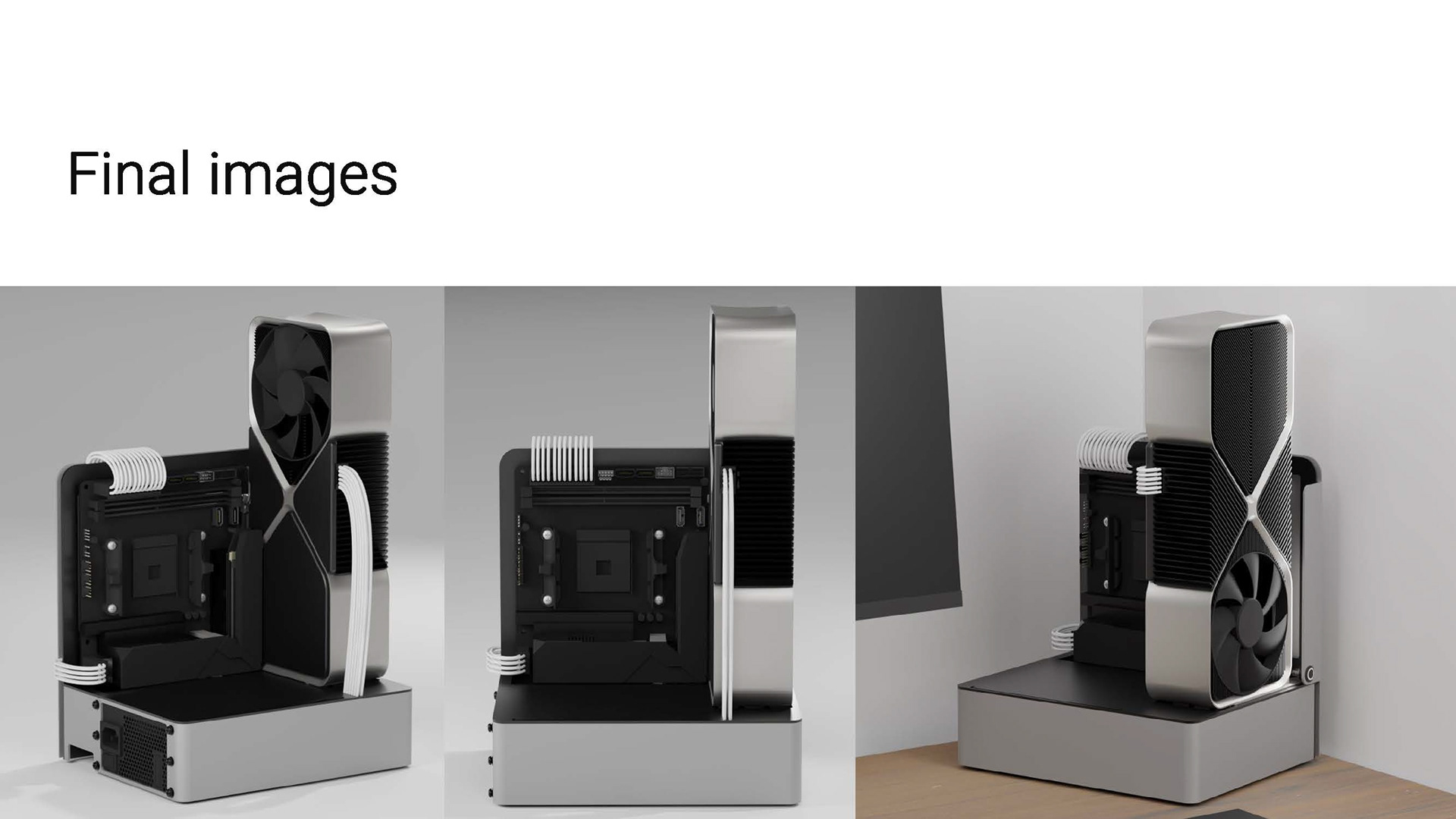
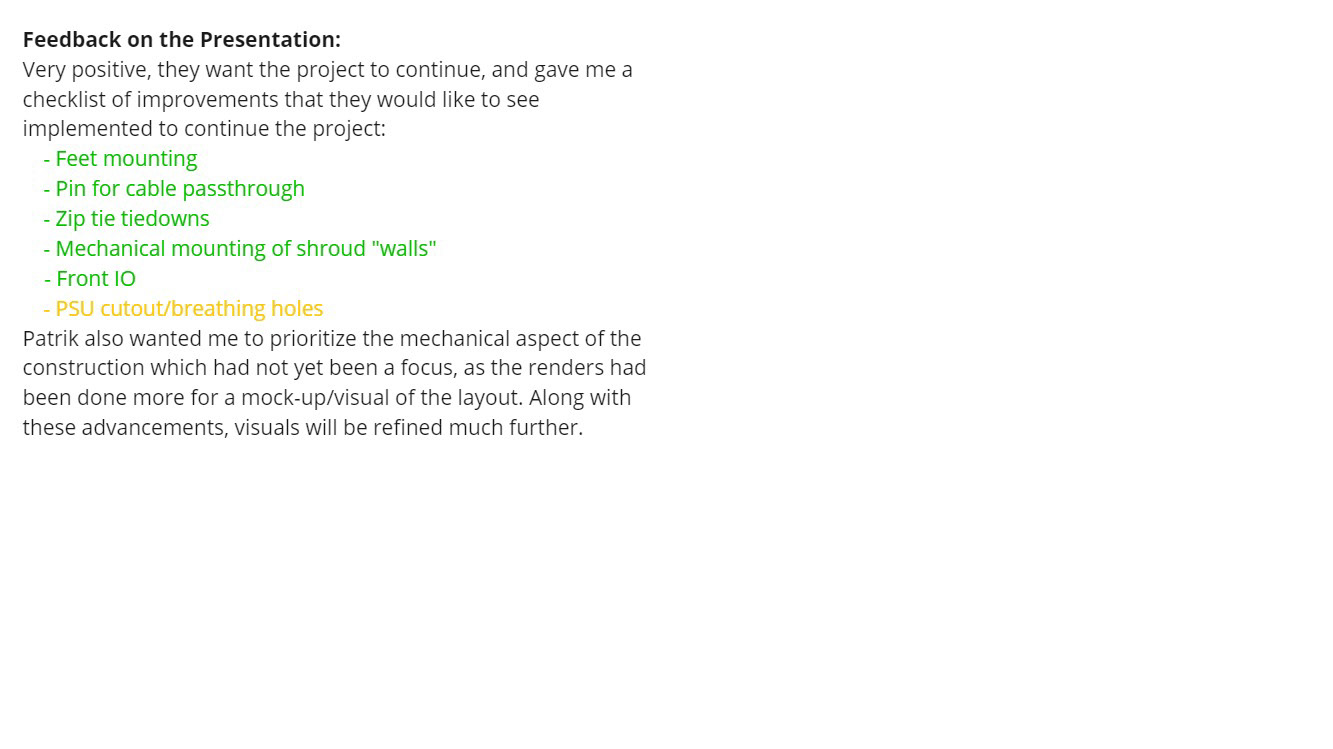
Applying feedback and Final Crunch
The above slides were presented at the end of my second last week, so I had a week afterwards to apply feedback and complete the concept to a stage I was happy with. I worked extremely hard in this last week to completely figure out all of the mechanical aspects of the case, including completely re-imagining how the rear panel of the case would work, figuring out cable management entirely, implementing front Input/Output ports and implementing a system for mounting watercooling hardware.
Final Presentation
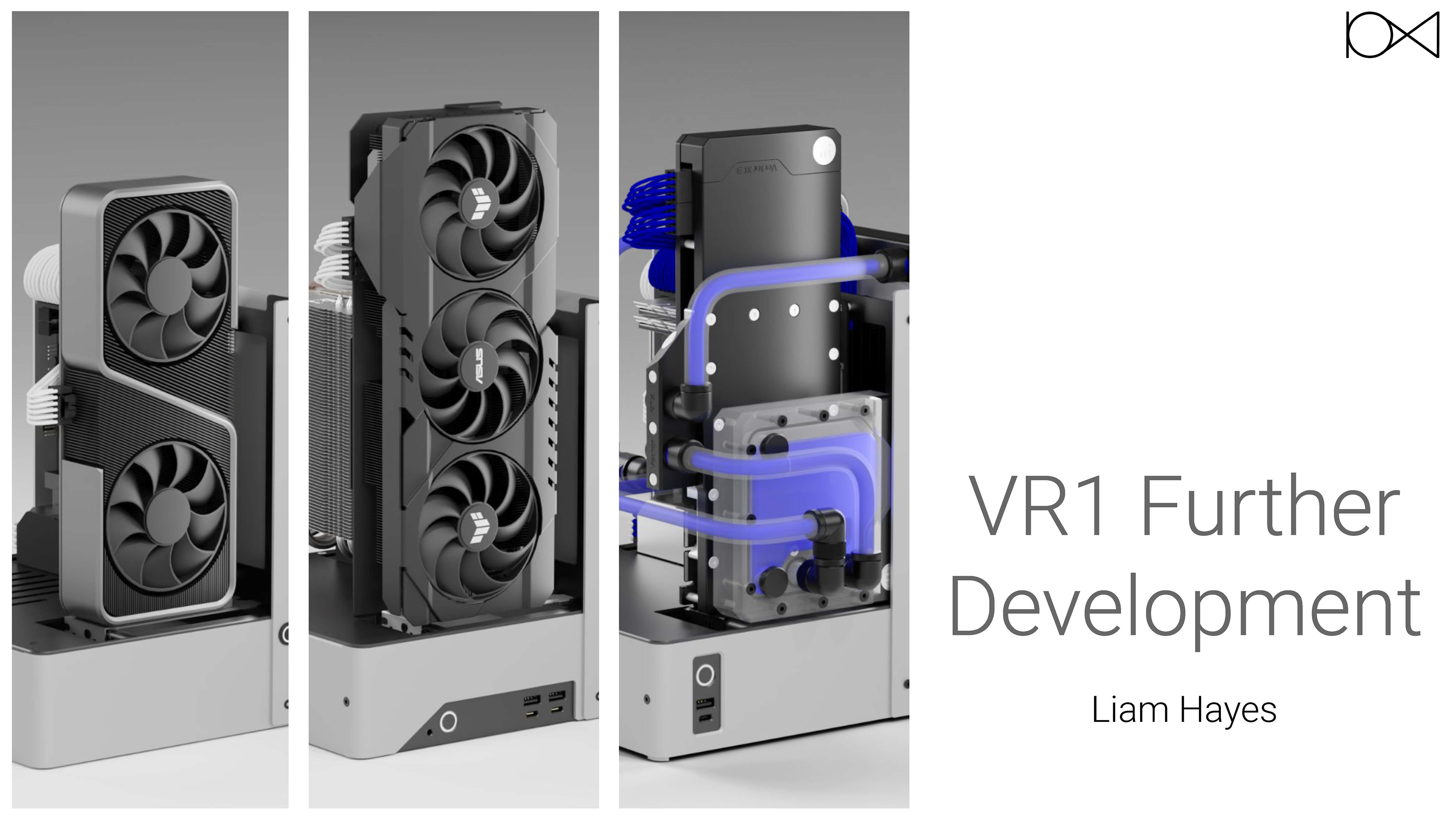
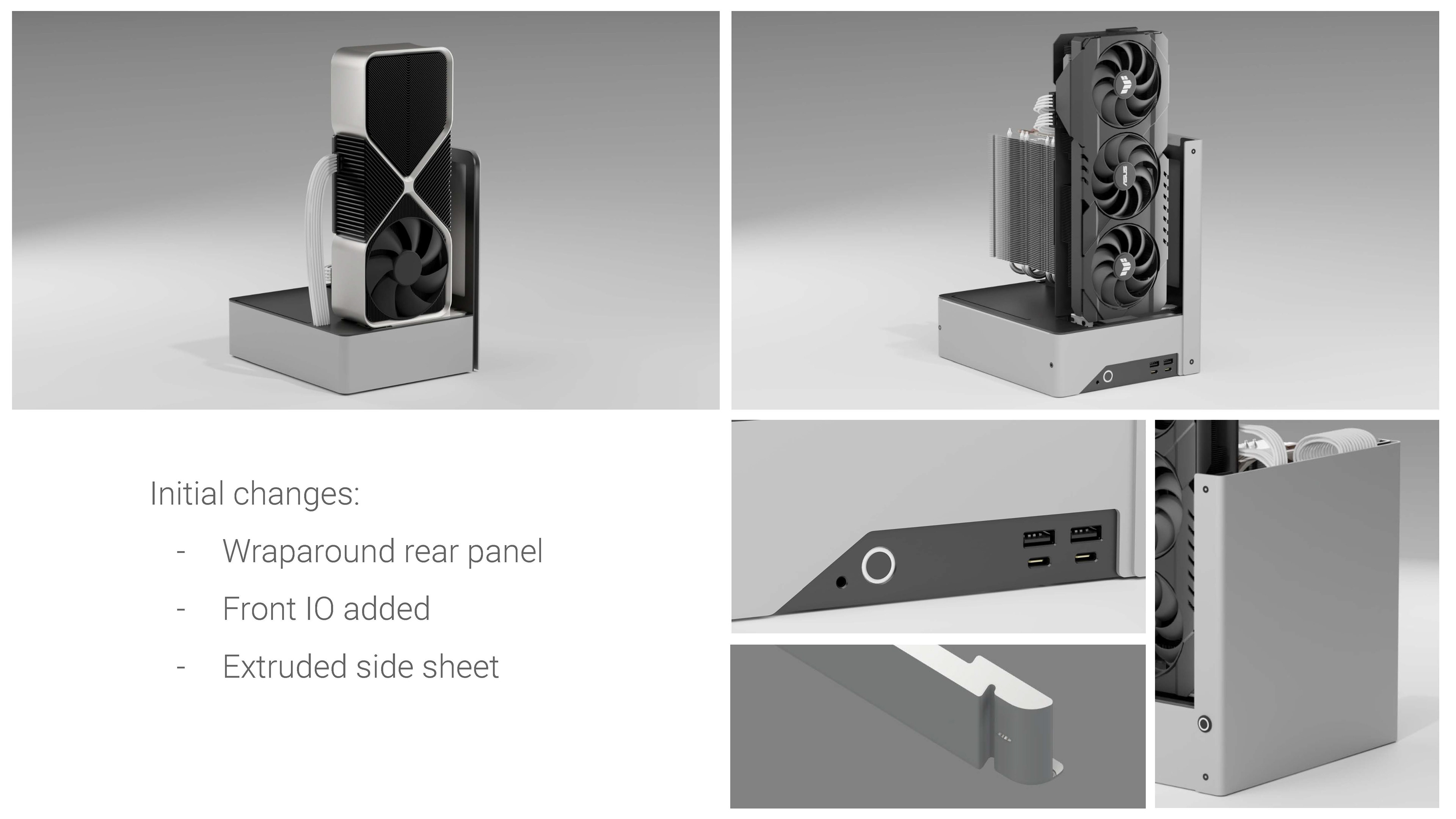
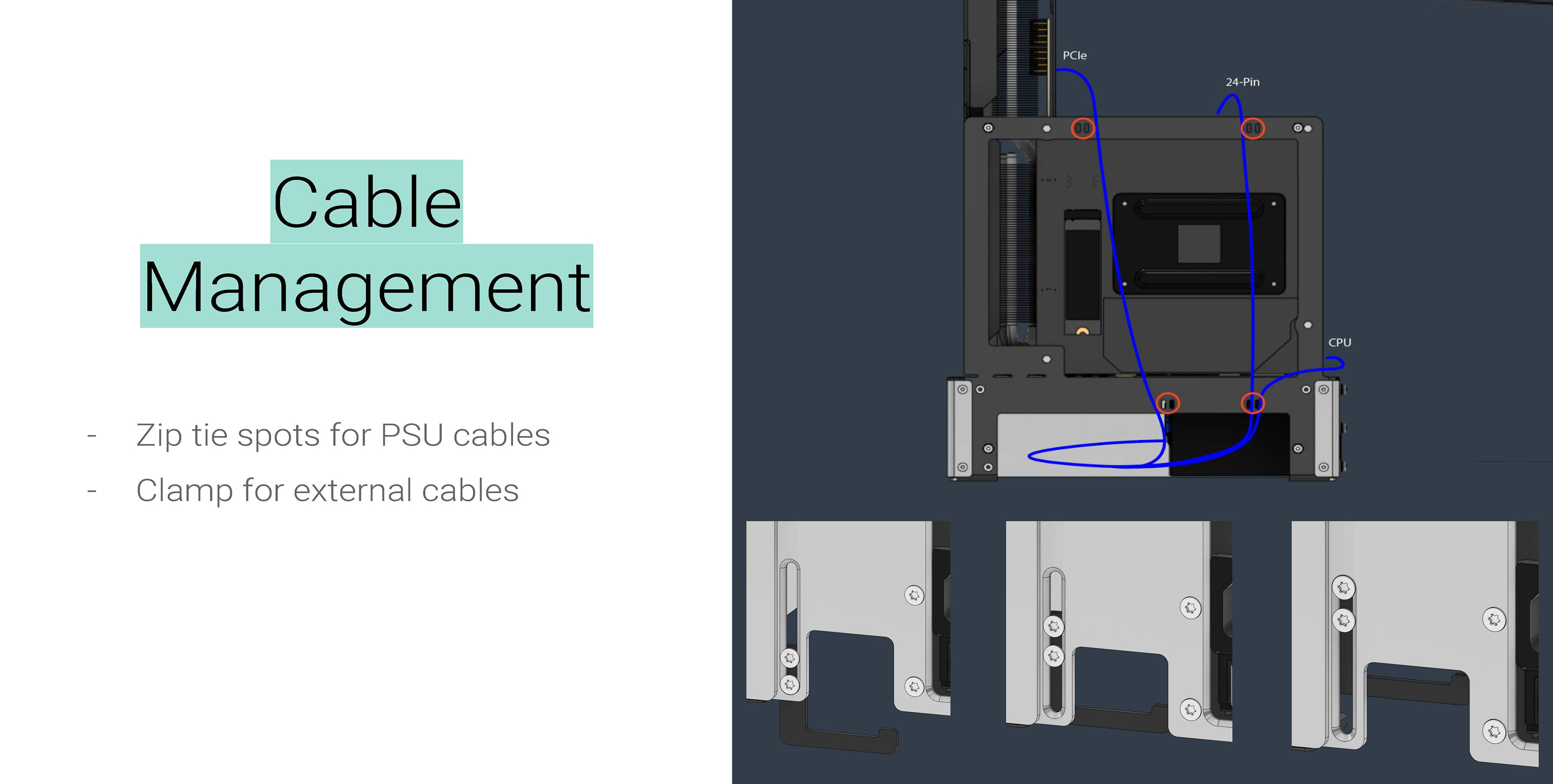
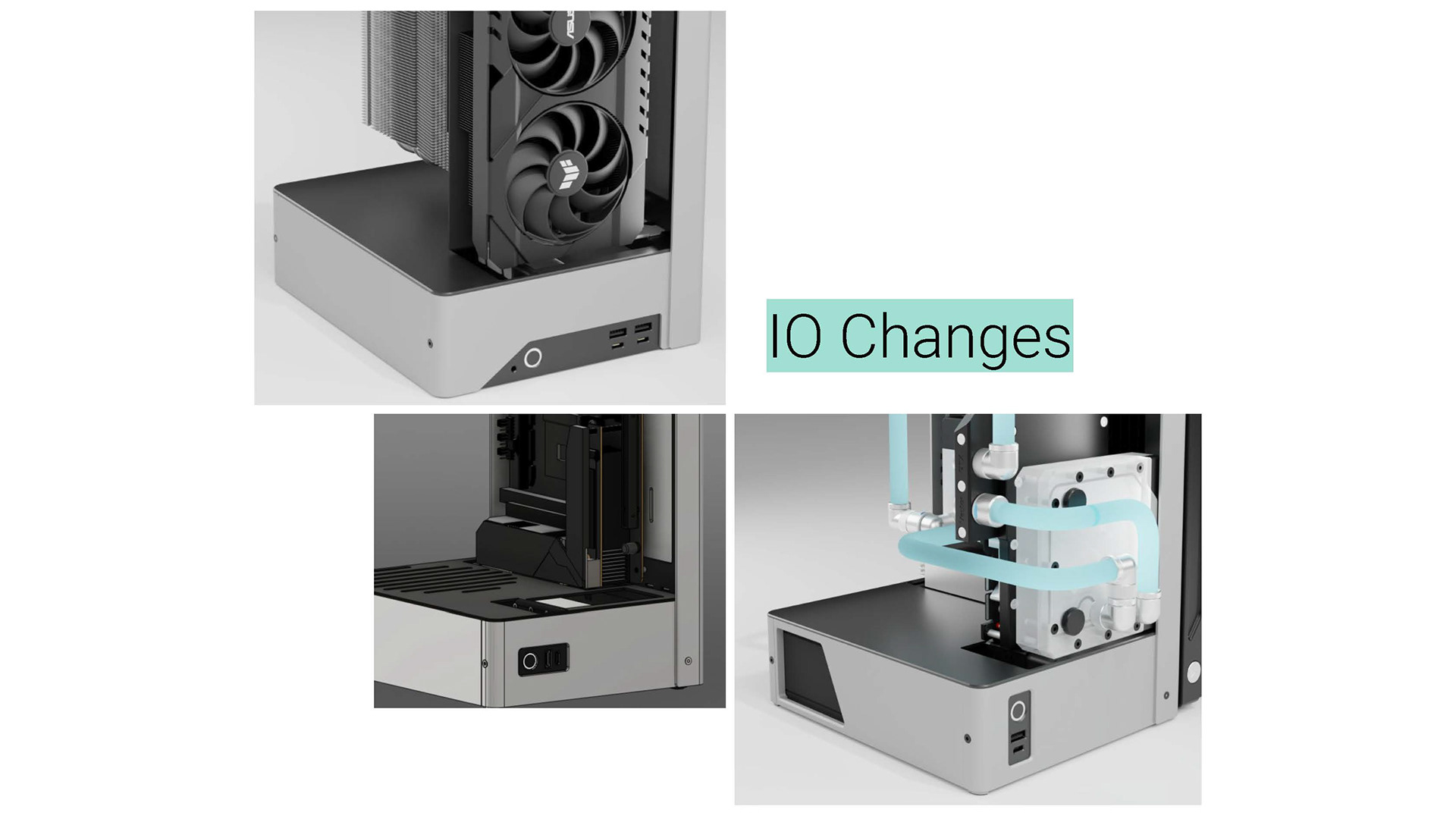
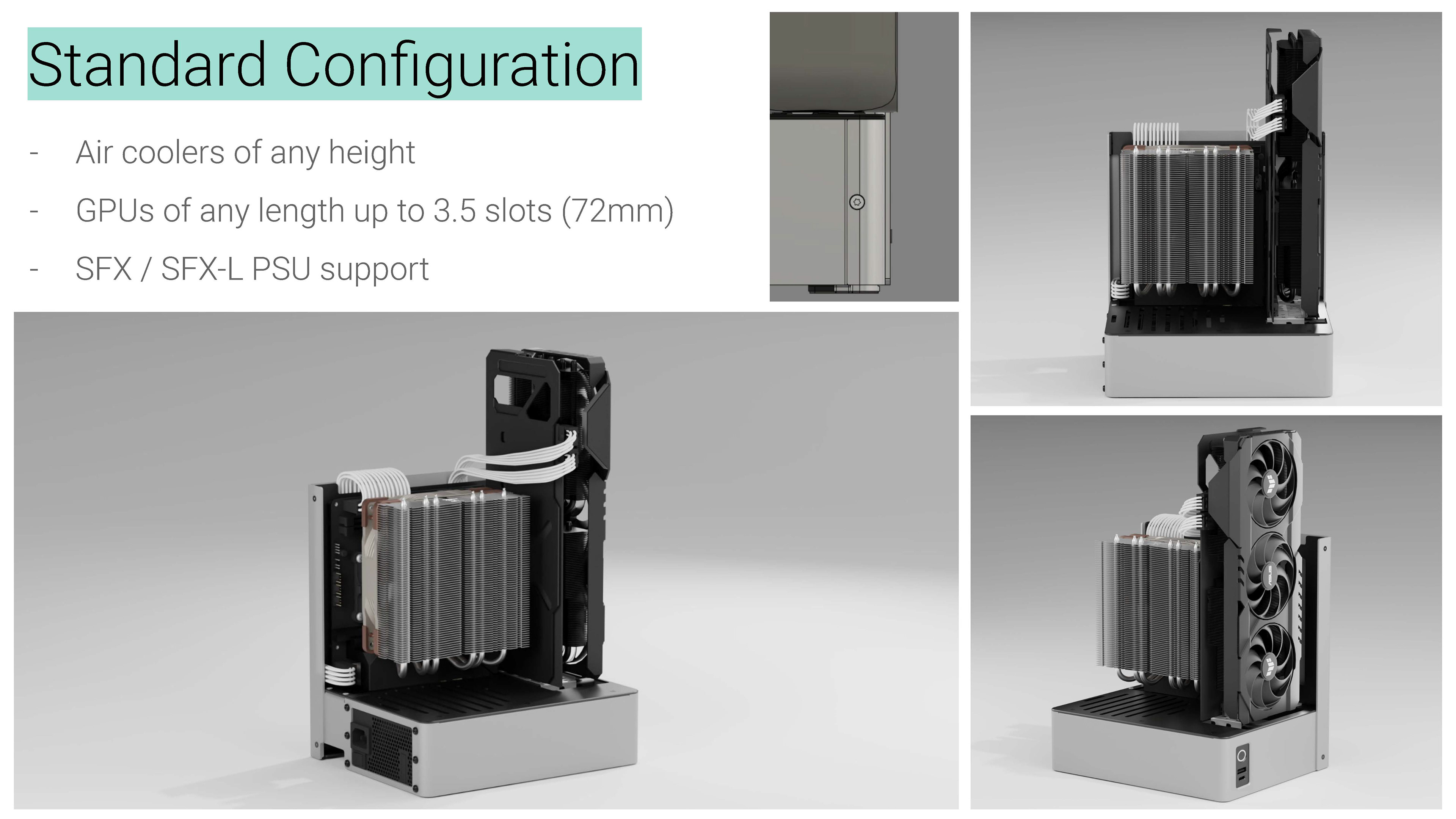

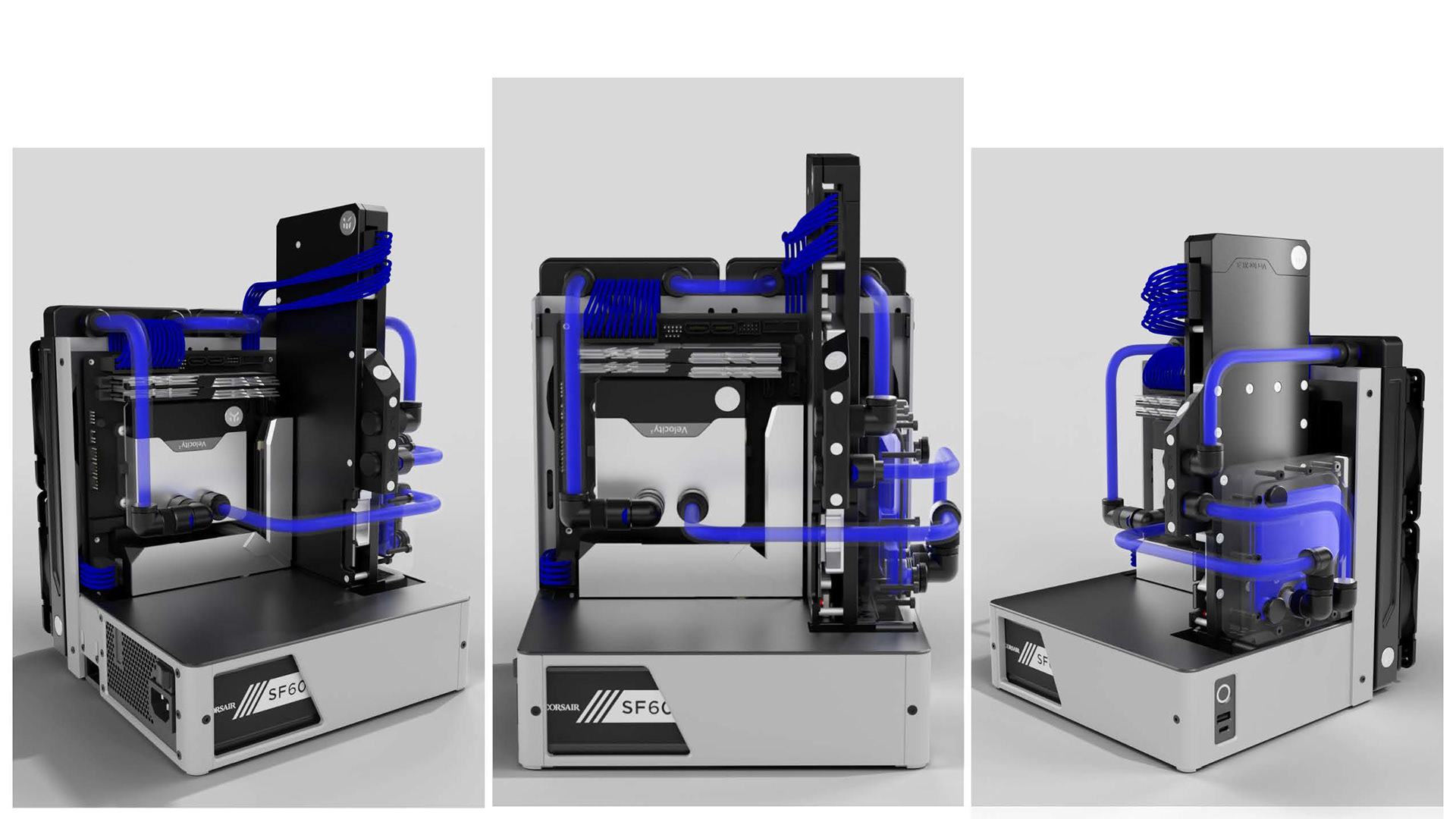
These final renders show an example of how a fully hardline-watercooled build could look like in the VR1 - including 2x 240mm radiators, and a watercooled CPU and GPU. This was modelled in blender: a program I had only just picked up during the internship, including the individually sleeved cables and tubing runs.
What next
VR1 is a project that I left for the team at Louqe to further develop if they choose to, as I continued on to an Erasmus placement in Portugal shortly after my final days at Louqe. Living in Sweden was a new experience for me, and the time I had with Louqe was a blast, working with a really interesting company, and on projects whose scope I would never have dreamed of before. I realised that I am extremely happy to work on projects such as these and can get very immersed and enthusiastic when a project gives me a good challenge. I look forward to my career in Product Design/Development after university!
